In government contracting, clarity is currency. When every word, capability, and differentiator is under scrutiny, the companies that rise to the top aren’t necessarily the largest or loudest—they’re the ones that speak with precision. In a world of acronyms, mandates, and mission alignment, the ability to articulate your value in a hyper-targeted way is what separates contenders from winners.
Let’s explore why hyper-niche messaging isn’t just a branding preference—it’s a business-winning strategy for B2G organizations.
The Problem with Generic Positioning in GovCon
Generic messaging is a liability in government contracting. Agencies don’t award multi-million-dollar contracts to companies that merely “support innovation” or “deliver secure solutions.” They want partners who understand their mission, speak their language, and solve their specific pain points.
Contracting officers and evaluation boards are inundated with vendors claiming to “do it all.” If your message isn’t directly aligned with the program goals, agency priorities, and procurement language, you’re likely to be filtered out long before the final downselect.
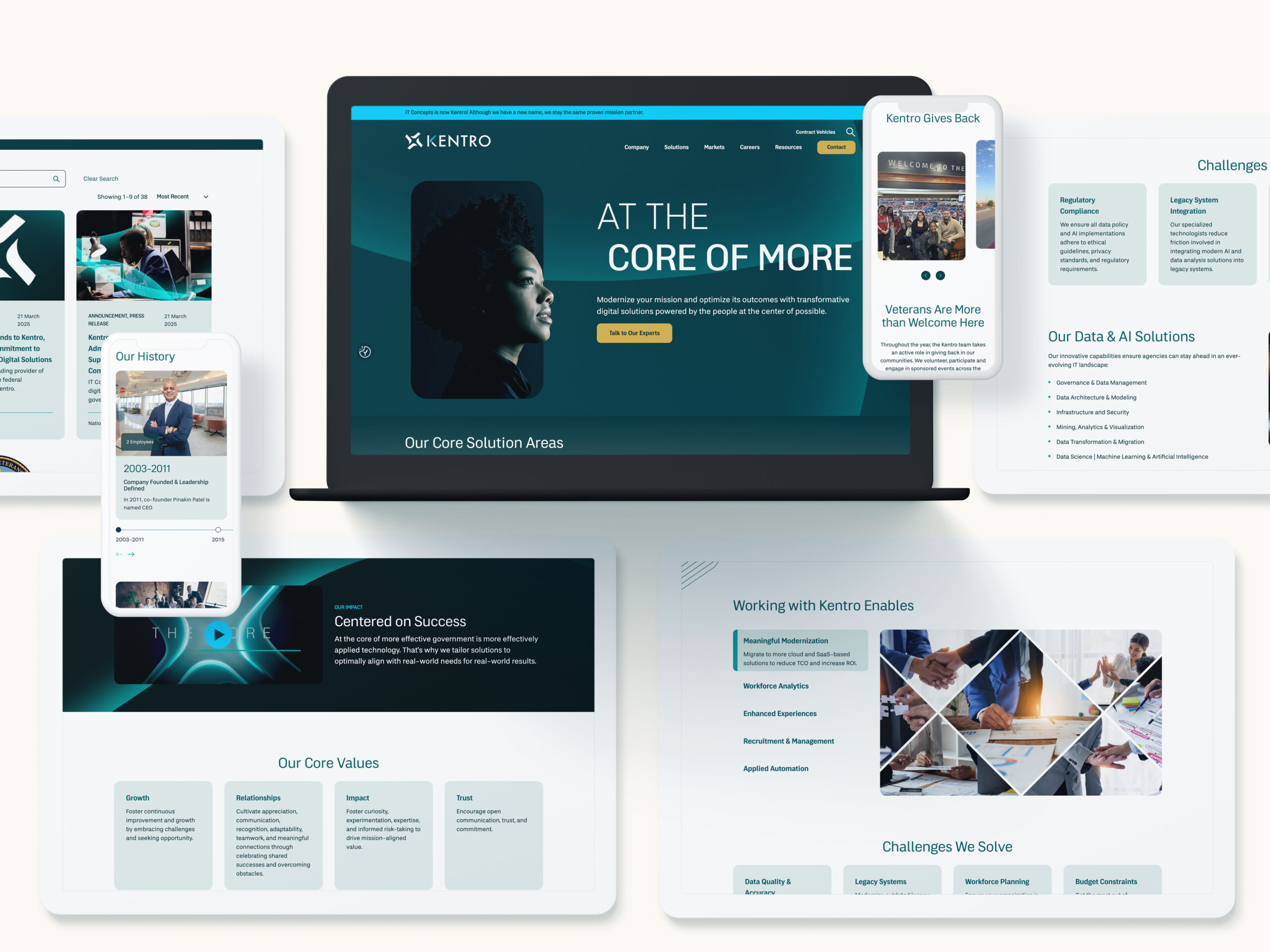
What Precision Branding Looks Like in B2G
Precision branding is more than buzzwords—it’s about showing a deep understanding of the agency, mission, and problem set you’re trying to support. It’s branding that reflects:
- Mission fluency: Messaging that maps to agency-specific goals, such as modernization, zero trust, or resilient logistics.
- Procurement awareness: A tone and structure that mirrors how contracts are framed and awarded.
- Technical confidence: Specificity around your capabilities, differentiators, and how they align to contract requirements.
This kind of messaging signals you’re not just capable—you’re credible.
Segmentation Strategies for Government Audiences
In the public sector, your audience isn’t “the government”—it’s a web of stakeholders, each with different concerns. Hyper-niche messaging starts with segmentation. Effective B2G segmentation can include:
- By agency or department: Tailoring messages for DHS, VA, DoD, or HHS based on their unique missions and tech stacks.
- By mission area: Whether it’s cybersecurity, digital transformation, healthcare delivery, or ISR, speak to the problem, not just the platform.
- By role: Program managers want operational outcomes; contracting officers want clarity and compliance.
This approach enables your BD, capture, and marketing teams to deliver the right message at the right time—every time.

Building Trust Through Tailored Messaging
In government contracting, trust drives procurement decisions. Precision branding helps build that trust by showing that you’ve done your homework. Tailored messaging demonstrates:
- Understanding of agency challenges
- Familiarity with prior contract awards and initiatives
- Ability to integrate with existing systems and workflows
Messaging that speaks directly to a program’s needs helps pre-sell your value well before the RFP drops—and can be the deciding factor in whether you get on the bidder’s shortlist.
Supporting Pursuits Through Smart Brand Architecture
When every pursuit is unique, your brand needs to be flexible without losing cohesion. Precision branding allows you to:
- Deploy microsites or campaign pages for specific agencies or programs.
- Align visuals and language across BD collateral, white papers, and proposal materials.
- Build modular messaging systems that scale from digital campaigns to in-person orals.
This kind of architecture supports faster spin-ups, more aligned capture efforts, and consistent storytelling across the entire business development funnel.
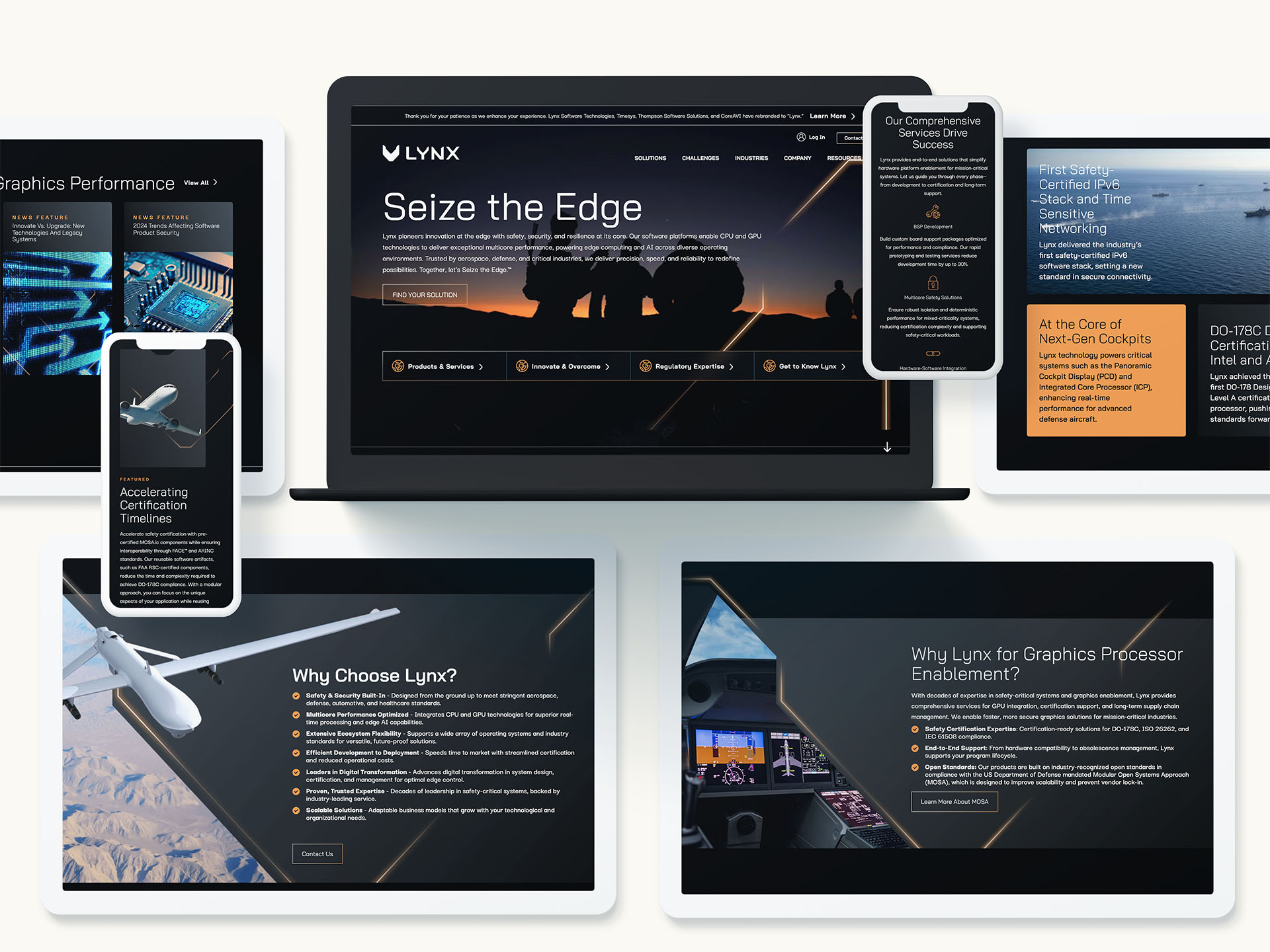

Why It All Matters for Winning Contracts
At the end of the day, precision branding is about outcomes. Tailored messaging can:
- Accelerate procurement cycles by removing confusion and building confidence.
- Improve proposal win rates by resonating more clearly with evaluators.
- Differentiate your solution in a crowded field of government vendors.
In the complex, competitive world of GovCon, vague promises won’t win big contracts. Specificity, strategy, and segmentation will.
Let’s Talk Precision
Looking to refine your message and win with more intention? Bluetext helps government contractors position with purpose—through hyper-targeted messaging, modular brand systems, and smart creative built for the B2G space.
Contact us to learn how we can help you speak the language of your next big win.
When a private equity firm acquires a company, the clock starts ticking. Growth targets accelerate, performance metrics tighten, and marketing teams—often lean and under-resourced—are expected to deliver results fast. But unlike traditional businesses, private equity portfolio companies (portcos) face a distinct set of marketing challenges that require a strategic and scalable approach.
From legacy tech stacks to murky messaging, portcos must overcome foundational hurdles to build a modern marketing engine. Here’s a look at the most common challenges—and how to solve them.
High Expectations, Limited Time
Private equity ownership often brings a new level of pressure. Marketing teams must balance long-term brand strategy with short-term performance goals, all while navigating new reporting structures and operational expectations. Unlike a typical company with a 3–5 year brand horizon, portcos are often judged on quarterly metrics, driving a need for speed that can compromise strategy.
This urgency makes prioritization critical. Portcos must identify high-impact marketing opportunities—whether that’s clarifying their messaging, launching a new website, or streamlining their digital campaigns—to make measurable progress, fast.


Brand Confusion Post-Acquisition
Many portcos are acquired mid-transformation. They may have undergone leadership changes, shifted target markets, or expanded their offerings—yet their brand still reflects the company they used to be. This disconnect can confuse customers, dilute differentiation, and weaken marketing ROI.
Compounding the issue, some portcos are the product of roll-ups or mergers, with multiple brands, cultures, and customer expectations colliding under one roof. Without a clear brand architecture and narrative, marketing efforts struggle to gain traction.
Strategic rebranding, messaging workshops, and go-to-market alignment can bring clarity to the chaos and position the business for accelerated growth.
A Patchwork Tech Stack
One of the most overlooked challenges portcos face is their fragmented marketing infrastructure. Often, companies enter PE ownership with outdated or disconnected systems—multiple CRMs, legacy websites, spreadsheets in place of automation platforms, and inconsistent analytics tracking.
This patchwork approach stalls scalability. It makes personalization difficult, breaks campaign attribution, and undermines confidence in reporting. Worse, it creates operational drag when every minute counts.
An early-stage digital audit—assessing martech tools, CRM integrations, analytics setup, and automation workflows—can lay the groundwork for a performance-ready marketing engine.


Unclear or Undifferentiated Value Propositions
It’s common for portcos to lack a well-defined or updated value proposition, especially after acquisition. The business may be expanding into new markets, offering new services, or pursuing new customers—yet their messaging hasn’t caught up.
This gap often shows up on the homepage. If a prospective customer or investor can’t understand what the company does and why it matters within five seconds, they move on.
To avoid that drop-off, portcos need messaging that resonates with buyers and aligns with business strategy. Positioning exercises, persona development, and competitive messaging frameworks help clarify the value prop and give marketing a strong foundation to build from.
Resource-Constrained Marketing Teams
In many portcos, the marketing function is a small team—or a single individual—expected to manage everything from lead generation to website updates to investor presentations. While agile, these teams often lack the bandwidth or specialized expertise to execute complex campaigns at scale.
This creates risk. Without a strong partner or internal support, critical gaps in strategy, design, data, or digital performance can hold back growth.
Building a hybrid model—where internal teams focus on strategy and oversight, while external partners handle execution—can be a force multiplier that enables marketing to move faster and smarter.
Internal Misalignment and Change Management
Even the best marketing strategy will fall flat if it’s not aligned across the organization. Many portcos face internal tension between legacy leadership and new PE-backed direction. Sales may resist marketing changes. Product teams may pursue different priorities. Leadership may hesitate to invest in brand-building.
Change management is key. Marketing leaders must build internal consensus, align stakeholders, and ensure everyone is marching to the same strategic beat. Transparent communication, cross-functional workshops, and shared KPIs can help unify vision and accelerate progress.



Turning Challenges Into Competitive Advantage
While the hurdles are real, so is the opportunity. With the right strategy, tools, and support, private equity portcos can build modern marketing engines that not only meet short-term growth goals, but also create lasting enterprise value.
At Bluetext, we’ve partnered with PE-backed companies across industries to streamline operations, sharpen positioning, modernize digital presence, and generate measurable results—fast. Whether you’re a PE firm looking to elevate your portfolio or a portco ready to modernize your marketing, Bluetext can help. Let’s talk about how we can accelerate your growth.
In a world saturated with content, podcasts offer a rare opportunity: uninterrupted attention. Listeners willingly tune in—often for 20 minutes or more—creating space for meaningful storytelling, thought leadership, and brand positioning. But what happens when your industry is one of the most tightly regulated?
For sectors like financial services, healthcare, energy, and government contracting, podcast marketing can feel like a compliance minefield. Privacy laws, advertising restrictions, and strict review protocols can make even the most well-intentioned ideas feel too risky to pursue.
But the truth is, when done right, podcasts can become a powerful, compliant communication channel—helping brands build trust, educate audiences, and differentiate from the competition.
Here’s how regulated industries can safely—and successfully—enter the podcast space.


1. Start with Strategy: Define Goals and Guardrails
Before pressing record, define the purpose of your podcast. Is it to educate clients? Attract talent? Showcase executive expertise? The answer will inform everything from tone and topics to distribution strategy.
In regulated industries, strategic planning should also include:
- Legal and compliance team involvement from the start
- Content approval workflows built into production timelines
- Defined no-go zones for topics or phrasing
When stakeholders align early, it’s easier to create content that’s both compelling and compliant.
2. Choose the Right Format for Your Risk Profile
Not every podcast has to be edgy or controversial to succeed. In fact, many of the most effective B2B podcasts take an interview-based or roundtable approach that focuses on subject-matter expertise, not sales.
Consider formats like:
- Executive Q&As with pre-scripted or pre-approved questions
- Narrative storytelling based on public case studies or anonymized experiences
- Topic deep-dives led by legal-approved thought leaders
A clear format keeps your message on track—and makes it easier to implement review processes without losing momentum.
3. Build in Compliance Without Killing Creativity
Regulated doesn’t have to mean boring. The key is finding creative ways to work within the rules. That might mean:
- Using a branded disclaimer at the beginning of each episode
- Incorporating compliance-friendly show notes with citations or disclosures
- Creating “editorial zones” where guests can speak freely, followed by clear, approved wrap-up messaging
With the right guardrails in place, your brand can still tell compelling stories without triggering red flags.


4. Distribute Strategically—and Securely
Public podcast platforms (Apple, Spotify) offer wide reach, but for some industries, gated distribution may be a better fit. Consider:
- Hosting private podcasts via platforms like Captivate or Podbean Pro
- Using internal channels like email newsletters or employee portals
- Creating companion blogs or transcripts that meet accessibility and compliance standards
In some cases, a hybrid model—where the main episode is public, but bonus content is gated—can deliver the best of both worlds.
5. Measure What Matters
Don’t just track downloads. Instead, focus on:
- Audience engagement (e.g., listens per episode, drop-off rate)
- Lead quality or post-listen conversions
- Internal feedback if the podcast supports recruitment or employee branding
If you’re in a regulated space, you already know success isn’t just about volume—it’s about building trust, demonstrating authority, and delivering real value. Podcasts, when strategically developed, can check every one of those boxes.
At Bluetext, we help brands in highly regulated industries craft podcast strategies that are as compliant as they are compelling.
Contact us to build a branded audio experience that breaks through the noise—without breaking the rules.
In today’s business landscape, mergers, acquisitions, and IPOs aren’t just transactions—they’re strategic leaps. Whether it’s a defense contractor expanding its mission set, a fintech firm going public to scale, or a cybersecurity company consolidating talent and tech, every move tells a story about where an industry is headed.
At Bluetext, we help organizations position themselves for these defining moments. That’s why we took a closer look at 82 notable transactions—each of which occurred within 24 months following a Bluetext engagement. From landmark deals like VMware’s acquisition by Broadcom to precision plays like CyberArk’s IPO and Culmen Technologies’ acquisition of PlanetRisk Federal—to understand the trends shaping the business world in 2025.
In this comprehensive overview, we delve into 82 significant transactions that have shaped various industries. Each transaction is accompanied by a concise summary and an analysis of the strategic advantages of the merger, IPO, or acquisition.
1. Reznick Group Acquired by CohnReznick
Summary: CohnReznick’s acquisition of Resnick Group strengthened its position in the accounting and advisory sector, enhancing service offerings and expanding its client base.
Strategic Advantage: This merger enabled CohnReznick to achieve economies of scale, streamline operations, and offer a broader range of services to clients, thereby increasing market share and competitiveness.
2. SourceFire Acquired by Cisco
Summary: Cisco’s acquisition of cybersecurity firm SourceFire for $2.7 billion in 2013 bolstered its security portfolio, integrating advanced threat protection solutions.
Strategic Advantage: The acquisition allowed Cisco to enhance its cybersecurity offerings, providing comprehensive protection solutions and addressing the growing demand for advanced threat defense mechanisms.
3. CyberArk Goes Public on NASDAQ
Summary: CyberArk, a pioneer in privileged access management (PAM), made its debut on the NASDAQ stock exchange, marking a major milestone in the evolution of enterprise cybersecurity. As one of the first cybersecurity firms focused solely on identity security to go public, CyberArk’s IPO signals increasing investor interest in solutions that protect against insider threats and credential-based attacks—two of the most pervasive risks in today’s digital landscape.
Strategic Advantage: Going public gives CyberArk the capital and visibility to accelerate its growth in a crowded identity security market. As organizations face mounting pressure to secure hybrid environments and zero trust frameworks, CyberArk’s PAM solutions are uniquely positioned to meet the moment.


4. HelloWallet Acquired by Morningstar
Summary: Morningstar’s acquisition of HelloWallet, a personal finance software company, expanded its financial wellness offerings, providing comprehensive tools for individual financial planning.
Strategic Advantage: This acquisition diversified Morningstar’s product portfolio, allowing it to cater to a broader customer base seeking integrated financial planning and investment solutions.
5. Riverbed Acquired by Thoma Bravo
Summary: Private equity firm Thoma Bravo acquired Riverbed Technology, a leader in application performance infrastructure, aiming to drive innovation and growth in network optimization solutions.
Strategic Advantage: The acquisition provided Thoma Bravo with a robust platform in the network performance sector, enabling synergies that could lead to enhanced product offerings and market expansion.
6. Acentia Acquired by Maximus
Summary: Maximus acquired Acentia, a provider of technology and management solutions, to enhance its capabilities in serving federal health and civilian agencies.
Strategic Advantage: This merger expanded Maximus’s service offerings in the government sector, allowing for a more comprehensive approach to IT and management solutions for federal clients.
7. Altimeter Acquired by Prophet
Summary: Prophet’s acquisition of Altimeter Group, a research and advisory firm, strengthened its digital transformation consulting services, offering deeper insights into emerging technologies.
Strategic Advantage: Integrating Altimeter’s expertise allowed Prophet to provide clients with cutting-edge strategies in digital transformation, enhancing its competitive edge in the consulting industry.
8. Abaco Systems Acquired by Veritas Capital
Summary: Veritas Capital acquired Abaco Systems, a provider of embedded computing solutions, to expand its portfolio in defense and industrial markets.
Strategic Advantage: The acquisition enabled Veritas to diversify its holdings and strengthen its presence in high-growth sectors, leveraging Abaco’s established relationships and technological capabilities.
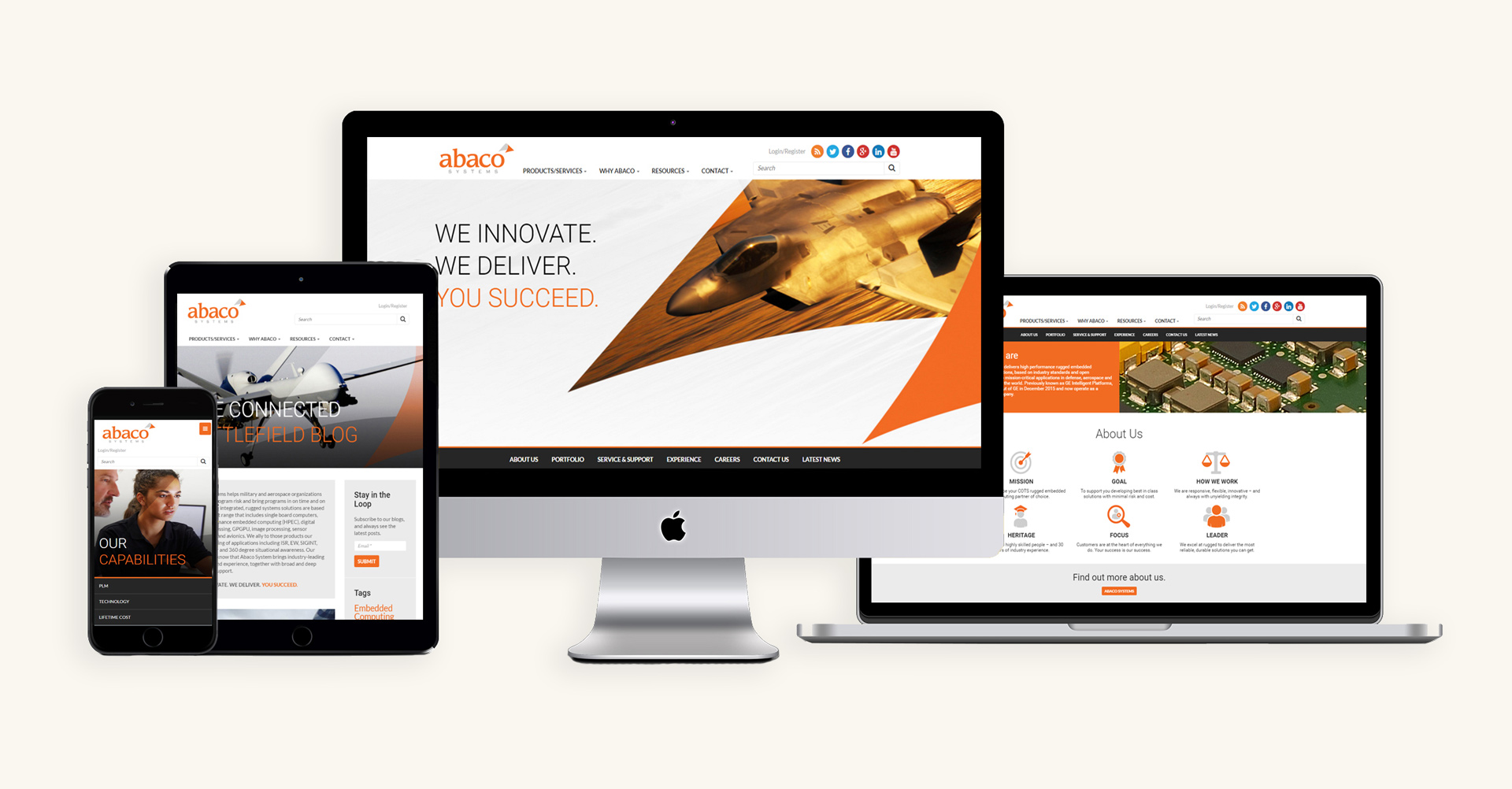

9. Force3 Acquired by Sirius
Summary: Sirius Computer Solutions acquired Force3, enhancing its networking and security solutions offerings for federal agencies.
Strategic Advantage: This merger allowed Sirius to broaden its federal market footprint, providing comprehensive IT solutions and capitalizing on Force3’s established government contracts.
10. Cigital Acquired by Synopsys
Summary: Synopsys acquired Cigital, a software security firm, to bolster its software integrity portfolio, providing comprehensive application security solutions.
Strategic Advantage: The acquisition strengthened Synopsys’s position in the software security market, enabling it to offer end-to-end solutions that address the increasing demand for secure software development.
11. Perthera Acquired by Pilot Growth
Summary: Pilot Growth Equity invested in Perthera, a precision medicine company, to accelerate its development of personalized cancer treatment solutions.
Strategic Advantage: This investment provided Perthera with the necessary capital to advance its innovative cancer treatment technologies, positioning it as a leader in the rapidly evolving precision medicine field.
12. CSC Merged into DXC
Summary: The merger of Computer Sciences Corporation (CSC) and the Enterprise Services business of Hewlett Packard Enterprise formed DXC Technology, a global IT services leader.
Strategic Advantage: The formation of DXC Technology created a powerhouse in IT services, combining resources and expertise to offer a comprehensive range of solutions to clients worldwide.
13. CB&I Acquired by Veritas Capital
Summary: Veritas Capital acquired the Capital Services business of CB&I, enhancing its portfolio in government services and infrastructure.
Strategic Advantage: This acquisition allowed Veritas to expand its offerings in the government sector, leveraging CB&I’s established infrastructure projects and client relationships.
14. Sage Acquired by GTCR
Summary: Private equity firm GTCR acquired Sage Payment Solutions, aiming to expand its presence in the payment processing industry.
Strategic Advantage: The acquisition provided GTCR with a platform to capitalize on the growing electronic payments market, leveraging Sage’s technology and customer base.
15. NetWatcher Acquired by Qualys
Summary: Qualys acquired NetWatcher, a provider of network security solutions, to enhance its cloud-based security and compliance offerings.
Strategic Advantage: Integrating NetWatcher’s capabilities allowed Qualys to offer more robust and comprehensive security solutions, addressing the increasing demand for cloud security.
16. XO Communications Acquired by Verizon
Summary: Verizon acquired XO Communications, expanding its fiber-optic network and enhancing its enterprise service capabilities.
Strategic Advantage: The acquisition strengthened Verizon’s infrastructure, enabling it to offer improved services to enterprise customers and support the growing demand for high-speed connectivity.
17. Endgame Acquired by Accenture Federal Services
Summary: Accenture Federal Services acquired Endgame, a cybersecurity firm specializing in endpoint protection, to bolster its security offerings for government clients.
Strategic Advantage: This acquisition enhanced Accenture’s ability to provide advanced cybersecurity solutions, addressing the critical needs of federal agencies in protecting against evolving cyber threats.
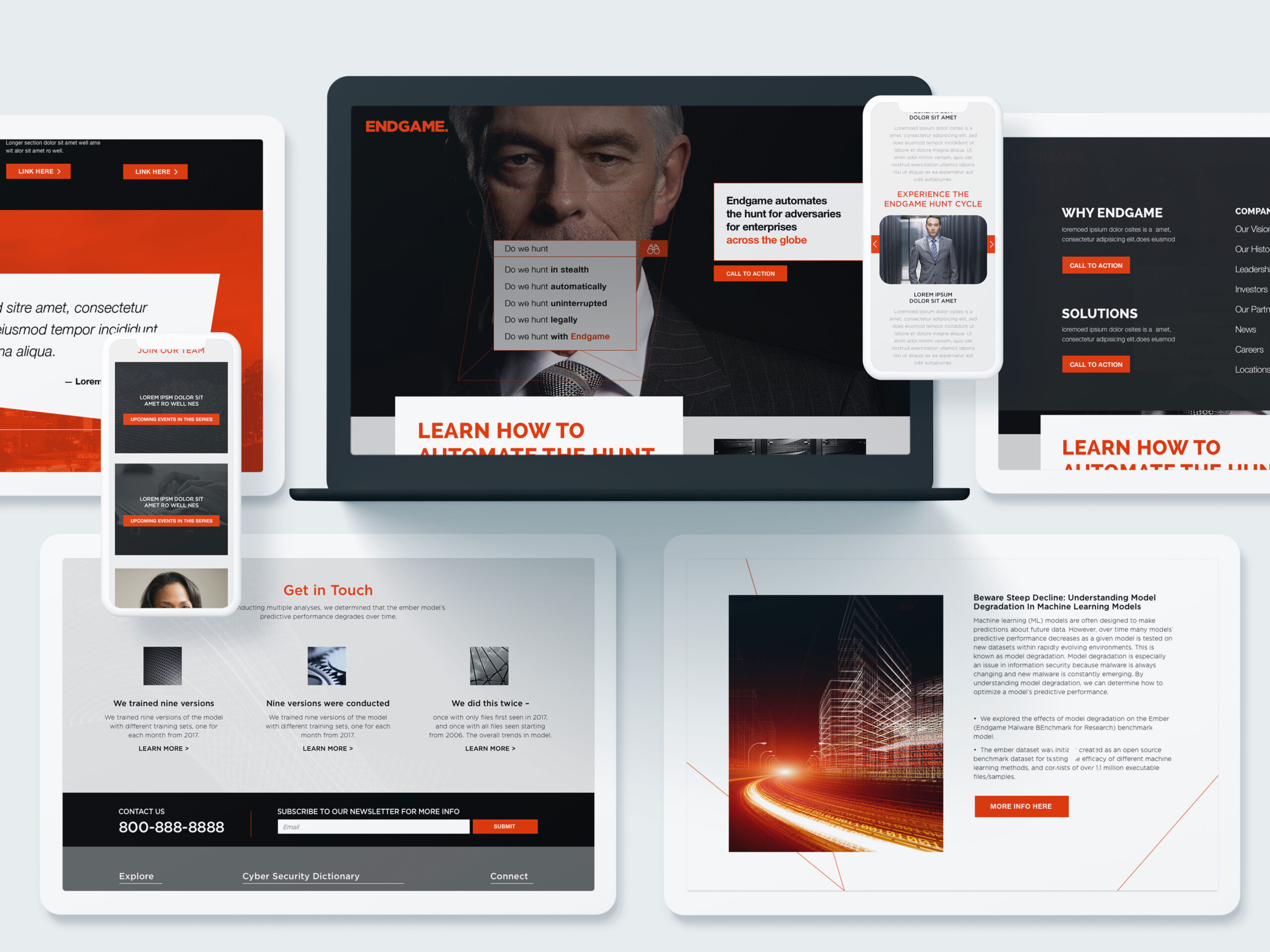

18. ThreatTrack (Vipre) Acquired by J2 Global
Summary: J2 Global acquired Vipre, a cybersecurity company, to expand its portfolio of internet security solutions.
Strategic Advantage: The acquisition allowed J2 Global to offer a more comprehensive suite of security products, enhancing its competitiveness in the cybersecurity market.
19. Lithium Merged with Khoros
Summary: Lithium Technologies merged with Spredfast to form Khoros, a customer engagement platform.
Strategic Advantage: The merger combined complementary technologies, enabling Khoros to offer integrated solutions for customer engagement across multiple channels.
20. PlanetRisk Acquired by Everbridge
Summary: Everbridge acquired PlanetRisk, a risk analytics company, to enhance its critical event management capabilities.
Strategic Advantage: This acquisition allowed Everbridge to provide more robust risk assessment and management solutions, strengthening its position in the critical event management sector.
21. PlanetRisk Federal Acquired by Culmen Technologies
Summary: In a move that deepens its national security and risk intelligence capabilities, Culmen Technologies acquired the federal business unit of PlanetRisk in early 2025. PlanetRisk Federal, known for delivering advanced geospatial, threat intelligence, and predictive analytics solutions to U.S. government agencies, strengthens Culmen’s footprint across the defense, intelligence, and homeland security markets. The acquisition aligns with Culmen’s strategy to expand its mission-critical support across the full threat lifecycle—combining operational expertise with enhanced data-driven insights.
Strategic Advantages: This acquisition brings immediate scale and capability lift to Culmen’s national security offerings. PlanetRisk Federal’s strengths in real-time situational awareness, data fusion, and predictive modeling directly complement Culmen’s existing programs in international security, logistics, and threat reduction.
22. BroadSoft Acquired by Cisco
Summary: Cisco acquired BroadSoft, a global leader in cloud-based communications, to enhance its cloud collaboration portfolio.
Strategic Advantage: This acquisition allowed Cisco to offer a comprehensive suite of unified communications solutions, strengthening its position in the cloud communications market.
23. CQ Roll Call Acquired by FiscalNote
Summary: FiscalNote acquired CQ Roll Call, a provider of congressional news and legislative tracking, to expand its policy and analysis offerings.
Strategic Advantage: The acquisition enabled FiscalNote to provide clients with a more robust set of tools for policy monitoring and analysis, enhancing its value proposition in the legislative intelligence market.
24. Mindtree Acquired by L&T
Summary: Larsen & Toubro (L&T) acquired Mindtree, an IT services and consulting company, to expand its digital services capabilities.
Strategic Advantage: This acquisition strengthened L&T’s position in the IT services sector, allowing it to offer a broader range of digital transformation solutions to clients.
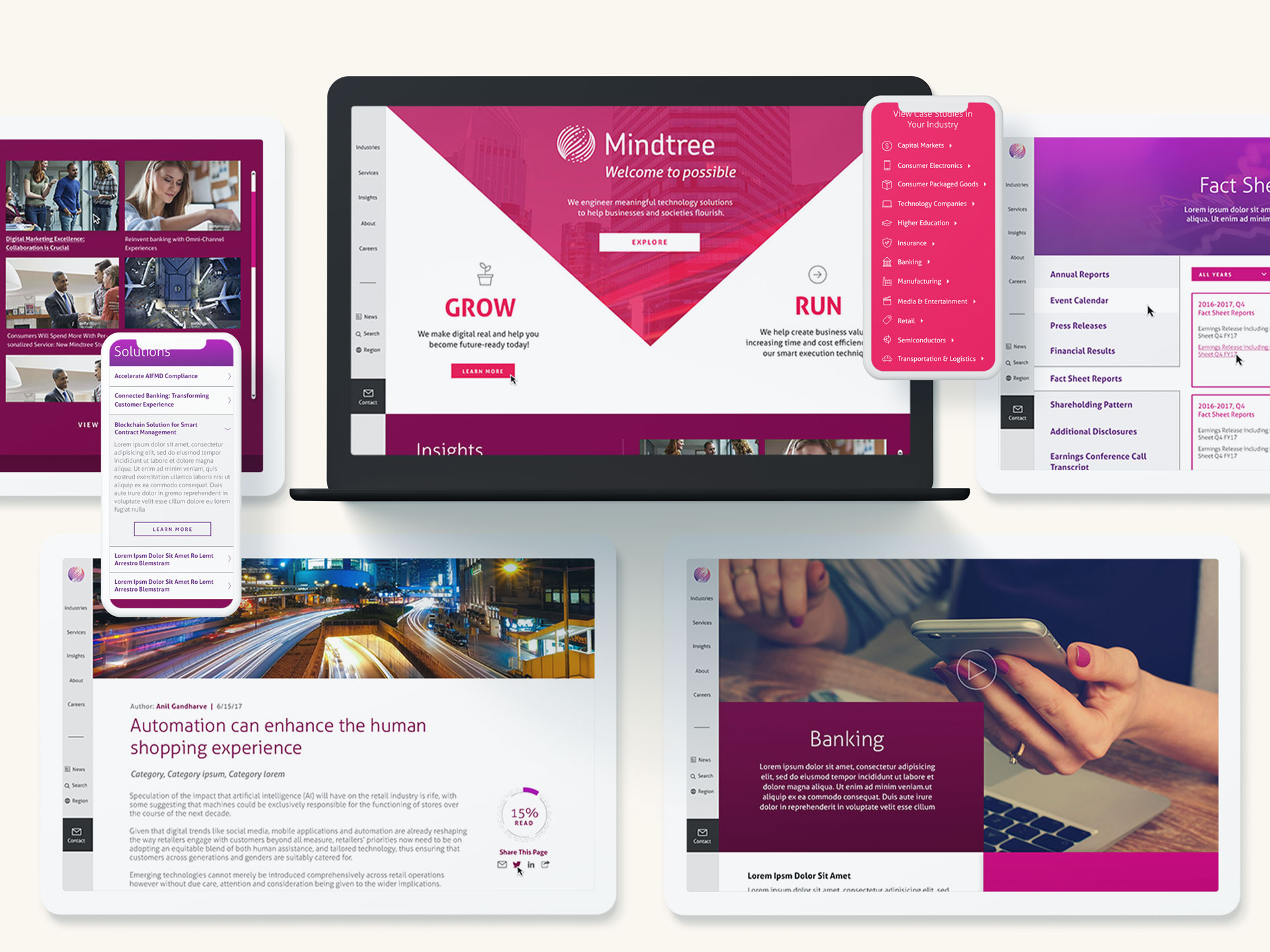

25. Earth Networks Acquired by Union Park Capital
Summary: Union Park Capital acquired Earth Networks, a provider of weather intelligence solutions, to enhance its environmental monitoring portfolio.
Strategic Advantage: The acquisition allowed Union Park Capital to expand its offerings in the environmental data sector, leveraging Earth Networks’ technology and expertise.
26. Endgame Acquired by Elastic
Summary: Elastic acquired Endgame, a security company specializing in endpoint protection, to integrate security capabilities into its search and analytics platform.
Strategic Advantage: This acquisition enabled Elastic to offer users integrated security solutions, enhancing its platform’s appeal to organizations seeking comprehensive data analysis and protection.
27. Cority Acquired by Thoma Bravo
Summary: Thoma Bravo acquired Cority, a provider of environmental, health, and safety (EHS) software, to expand its investment in the EHS sector.
Strategic Advantage: The acquisition allowed Thoma Bravo to leverage Cority’s market position and technology to drive growth in the EHS software market.
28. GoCanvas Acquired by K1
Summary: K1 Investment Management acquired GoCanvas, a mobile platform for businesses to automate workflows, to accelerate its growth and product development.
Strategic Advantage: This acquisition provided GoCanvas with resources to enhance its platform and expand its market reach, strengthening its position in the mobile workflow automation sector.
29. KnightPoint Acquired by Perspecta
Summary: Perspecta acquired KnightPoint Systems, a cybersecurity and IT services firm, to bolster its cybersecurity offerings for government clients.
Strategic Advantage: The acquisition enhanced Perspecta’s ability to provide comprehensive cybersecurity solutions, addressing the critical needs of federal agencies.
30. Bronfman Rothschild Acquired by NFP
Summary: NFP acquired Bronfman Rothschild, a wealth management firm, to expand its investment advisory services.
Strategic Advantage: This acquisition allowed NFP to enhance its wealth management capabilities, offering clients a broader range of financial planning and investment services.
31. LGS Innovations Acquired by CACI
Summary: CACI International acquired LGS Innovations, a provider of C4ISR and cybersecurity solutions, to strengthen its offerings for defense and intelligence clients.
Strategic Advantage: The acquisition bolstered CACI’s capabilities in communications and cybersecurity, enhancing its ability to serve national security missions.
32. Paya Goes Public via SPAC Merger with FinTech Acquisition Corp III
Summary: Paya, a leading integrated payments and commerce solutions provider, went public through a merger with FinTech Acquisition Corp III, a special purpose acquisition company (SPAC), in late 2020. The transaction positioned Paya on the NASDAQ under the ticker symbol “PAYA,” enabling it to access public capital markets while continuing its strategic expansion across high-growth verticals such as healthcare, education, non-profit, and field services.
Strategic Advantage: The SPAC merger offered Paya both financial and strategic runway to scale its operations in a competitive and rapidly evolving fintech landscape. Paya’s move exemplifies how verticalized fintech platforms can leverage public markets—not just for liquidity, but as a catalyst for category leadership and innovation.
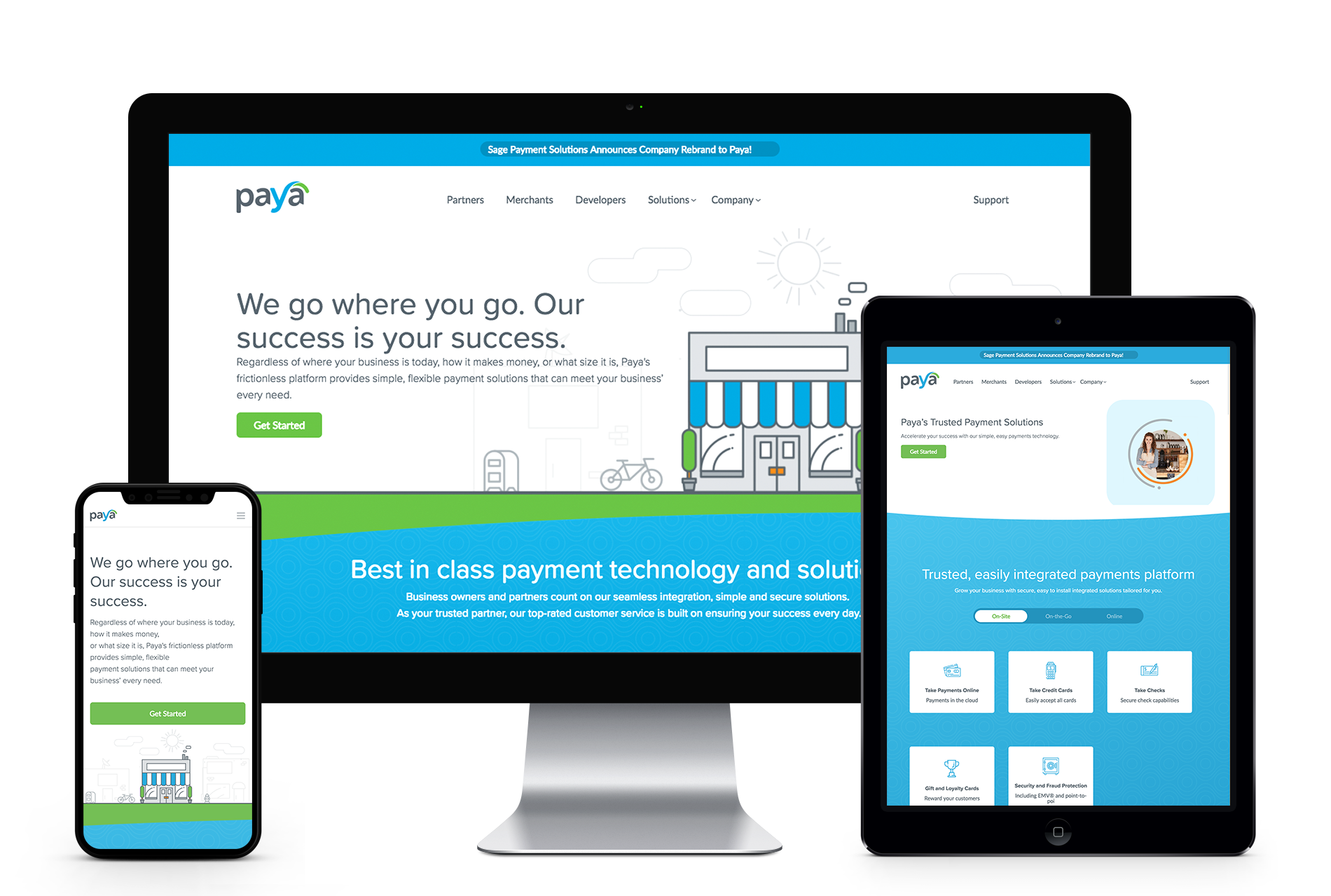

33. Centauri Acquired by KBR
Summary: KBR acquired Centauri, a provider of engineering and technology solutions for national security, to expand its defense and intelligence capabilities.
Strategic Advantage: This acquisition enhanced KBR’s position in the government solutions sector, allowing it to offer a broader range of services to defense and intelligence clients.
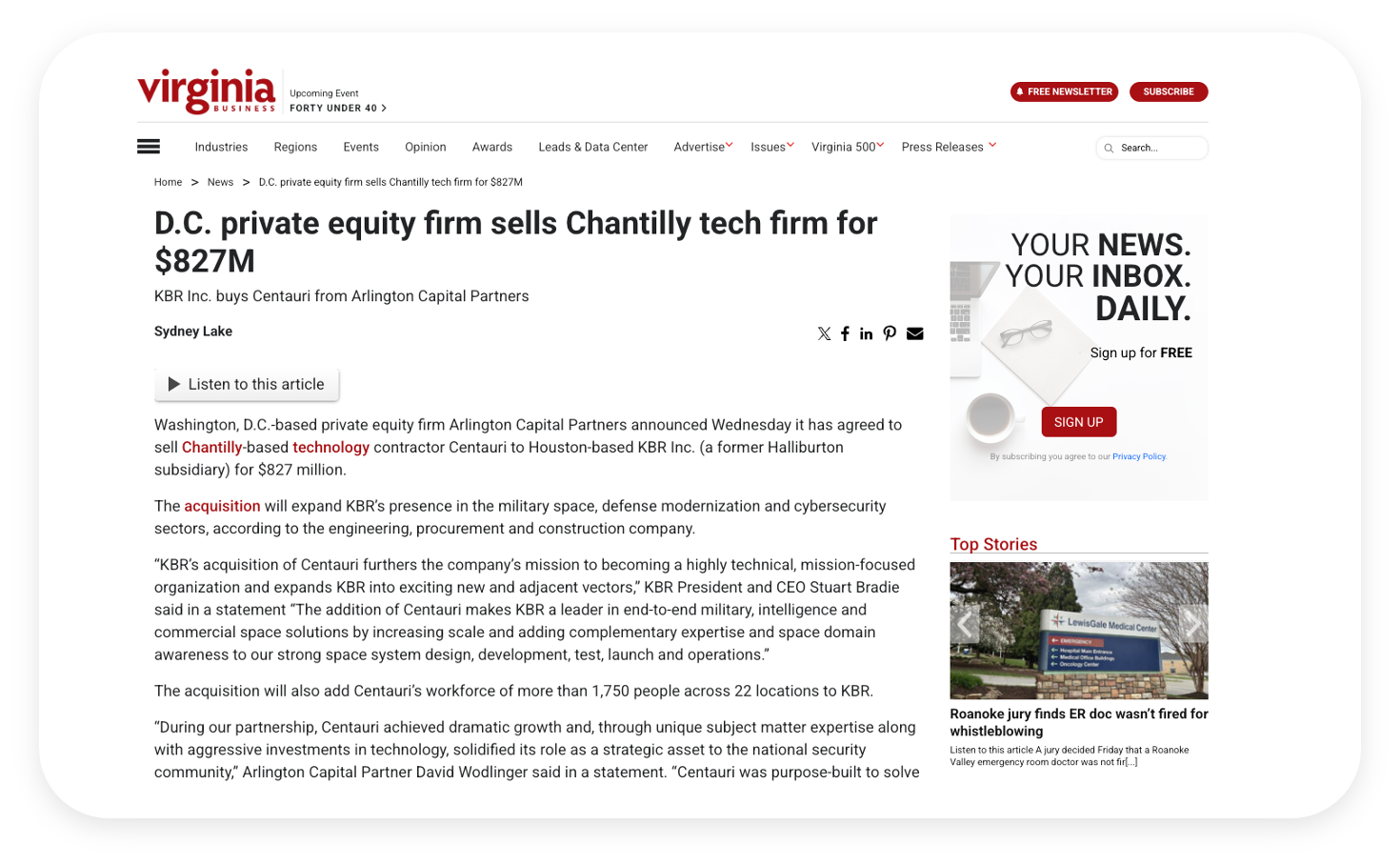

34. PacStar Acquired by Curtiss-Wright
Summary: Curtiss-Wright acquired PacStar, a provider of tactical communications solutions, to enhance its defense electronics portfolio.
Strategic Advantage: The acquisition strengthened Curtiss-Wright’s offerings in battlefield communications, providing integrated solutions for military applications.
35. Alfresco Acquired by Hyland
Summary: Hyland acquired Alfresco, an open-source content services provider, to expand its content management capabilities.
Strategic Advantage: This acquisition allowed Hyland to offer a more comprehensive suite of content services solutions, catering to a broader range of industries and use cases.
36. Cloudera Acquired by KKR and CD&R
Summary: Investment firms KKR and Clayton, Dubilier & Rice (CD&R) acquired Cloudera, a data management and analytics company, to take it private and drive its next phase of growth.
Strategic Advantage: The acquisition provided Cloudera with resources and strategic guidance to enhance its product offerings and expand its market presence in the data analytics sector.
37. Clarabridge Acquired by Qualtrics
Summary: Qualtrics acquired Clarabridge, a customer experience management platform, to enhance its experience management capabilities.
Strategic Advantage: This acquisition allowed Qualtrics to offer more robust customer insights and analytics solutions, strengthening its position in the experience management market.
38. Blue Yonder Acquired by Panasonic
Summary: Panasonic acquired Blue Yonder, a supply chain management software company, to enhance its autonomous supply chain capabilities.
Strategic Advantage: The acquisition enabled Panasonic to integrate Blue Yonder’s AI-driven supply chain solutions with its hardware offerings, providing comprehensive solutions for logistics and manufacturing clients.


39. MuseDev Acquired by Sonatype
Summary: Sonatype acquired MuseDev, a software quality automation company, to enhance its software supply chain management platform.
Strategic Advantage: This acquisition allowed Sonatype to offer integrated code quality and security solutions, helping organizations manage and secure their software development processes.
40. Abaco Systems Acquired by Ametek
Summary: Ametek acquired Abaco Systems, a provider of embedded computing solutions, to expand its electronic instruments and electromechanical devices portfolio.
Strategic Advantage: The acquisition strengthened Ametek’s position in the defense and industrial markets, leveraging Abaco’s embedded computing expertise.
41. Perspecta Acquired by Peraton
Summary: Peraton acquired Perspecta, a government services provider, to create a leading government technology solutions contractor.
Strategic Advantage: The acquisition combined complementary capabilities, enhancing Peraton’s ability to deliver comprehensive solutions to federal agencies.


42. BigBear.ai Goes Public via SPAC Merger with GigCapital4
Summary: BigBear.ai, an AI-powered analytics company, merged with GigCapital4, a special purpose acquisition company, to become a publicly traded entity.
Strategic Advantage: The merger provided BigBear.ai with capital to accelerate growth and expand its AI analytics offerings across various sectors.
43. ResMan Acquired by Inhabit IQ
Summary: Inhabit IQ, a collective of tech-forward products serving the property management industry, acquired ResMan, a leading property management SaaS platform provider.
Strategic Advantage: This acquisition allowed Inhabit IQ to enhance its suite of solutions for multifamily and commercial property management, offering more comprehensive and integrated services to its clients.
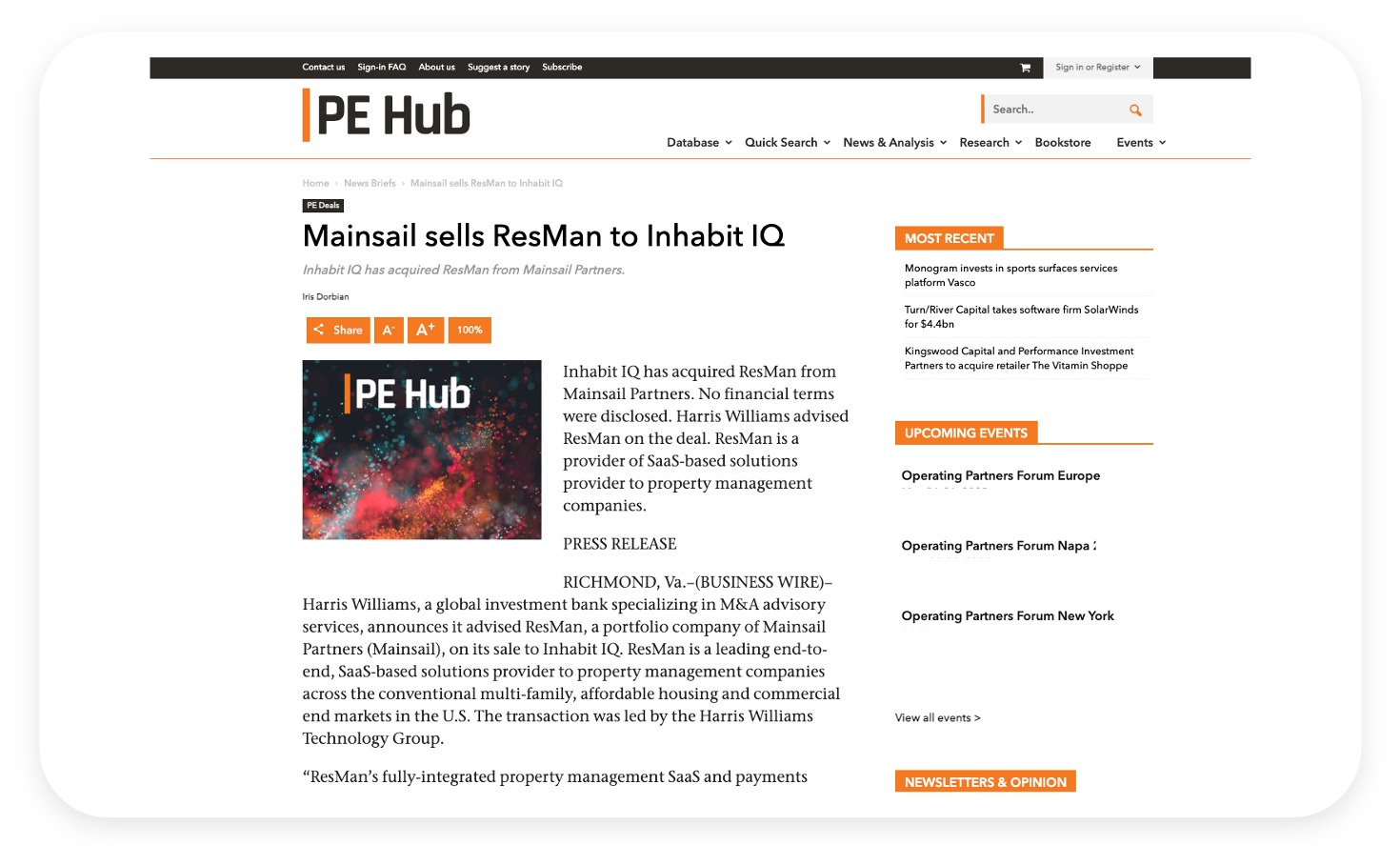

44. Narrative Science Acquired by Salesforce
Summary: Salesforce acquired Narrative Science, a data storytelling company, integrating its capabilities into Salesforce’s Tableau Software.
Strategic Advantage: This acquisition enhanced Tableau’s analytics platform by adding automated data storytelling features, enabling users to better understand and communicate data insights.
45. Quest Acquired by Clearlake Capital
Summary: Clearlake Capital Group completed the acquisition of Quest Software, a global cybersecurity, data intelligence, and IT operations management software provider.
Strategic Advantage: The acquisition aimed to accelerate Quest’s growth and drive momentum in its cybersecurity and data intelligence solutions, leveraging Clearlake’s resources and expertise.


46. Cvent Goes Public via SPAC Merger with Dragoneer Growth Opportunities Corp. II
Summary: Cvent, a meetings, events, and hospitality technology provider, completed its merger with Dragoneer Growth Opportunities Corp. II, a special purpose acquisition company, and began trading on the Nasdaq as “CVT.”
Strategic Advantage: The merger provided Cvent with capital to accelerate product innovation and expand its market presence in the event technology sector.
47. ID Technologies Acquired by CACI
Summary: CACI International acquired ID Technologies, an enterprise IT and network modernization provider with NSA-compliant Commercial Solutions for Classified (CSfC) technology.
Strategic Advantage: The acquisition expanded CACI’s secure network modernization capabilities, enhancing its offerings for U.S. government clients requiring classified communication solutions.
48. Citrix Acquired by Vista Equity Partners and Evergreen Coast Capital
Summary: Affiliates of Vista Equity Partners and Evergreen Coast Capital completed the acquisition of Citrix Systems, a leader in cloud computing and virtualization technology, in an all-cash transaction valued at $16.5 billion.
Strategic Advantage: The acquisition aimed to take Citrix private, allowing the company to accelerate its SaaS transformation and expand its platform for secure hybrid work solutions.
49. ManTech Acquired by Carlyle Group
Summary: Global investment firm Carlyle Group acquired ManTech International, a cyber and technology contractor for defense, intelligence, and civilian agencies, in an all-cash transaction valued at approximately $4.2 billion.
Strategic Advantage: The acquisition aimed to leverage ManTech’s expertise in cybersecurity and technology solutions to enhance Carlyle’s portfolio in the government services sector.
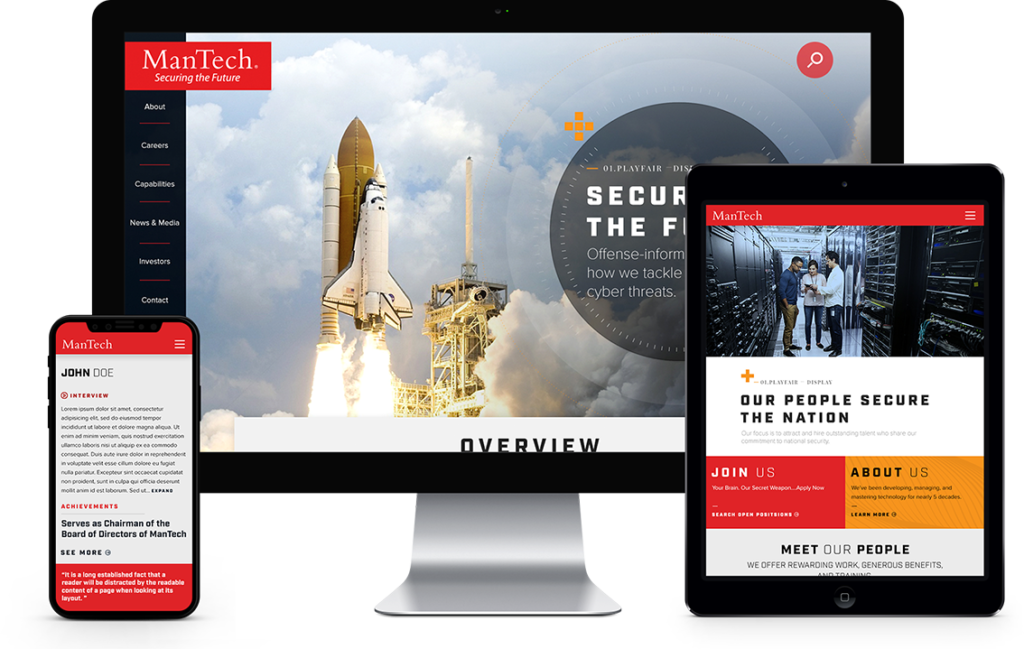

50. Level Access Merged with eSSENTIAL Accessibility
Summary: Level Access, a provider of enterprise digital accessibility solutions, merged with eSSENTIAL Accessibility, a pioneer of Accessibility-as-a-Service, to create a comprehensive digital accessibility solutions provider.
Strategic Advantage: The merger combined complementary technologies and expertise, accelerating the mainstream adoption of digital accessibility and offering end-to-end solutions for clients.
51. Cybeats Technologies Listed on the Canadian Securities Exchange
Summary: Cybeats Technologies Corp., a cybersecurity company specializing in Software Bill of Materials (SBOM) management and software supply chain intelligence, commenced trading on the Canadian Securities Exchange under the symbol “CYBT.”
Strategic Advantage: The listing provided Cybeats with access to public capital markets, enabling it to expand its cybersecurity solutions and address the growing demand for software supply chain security.
52. Octo Acquired by IBM
Summary: IBM announced the acquisition of Octo, a U.S.-based IT modernization and digital transformation services provider serving the federal government.
Strategic Advantage: The acquisition aimed to establish one of the largest digital transformation partners for the federal government, enhancing IBM’s consulting capabilities in the public sector.
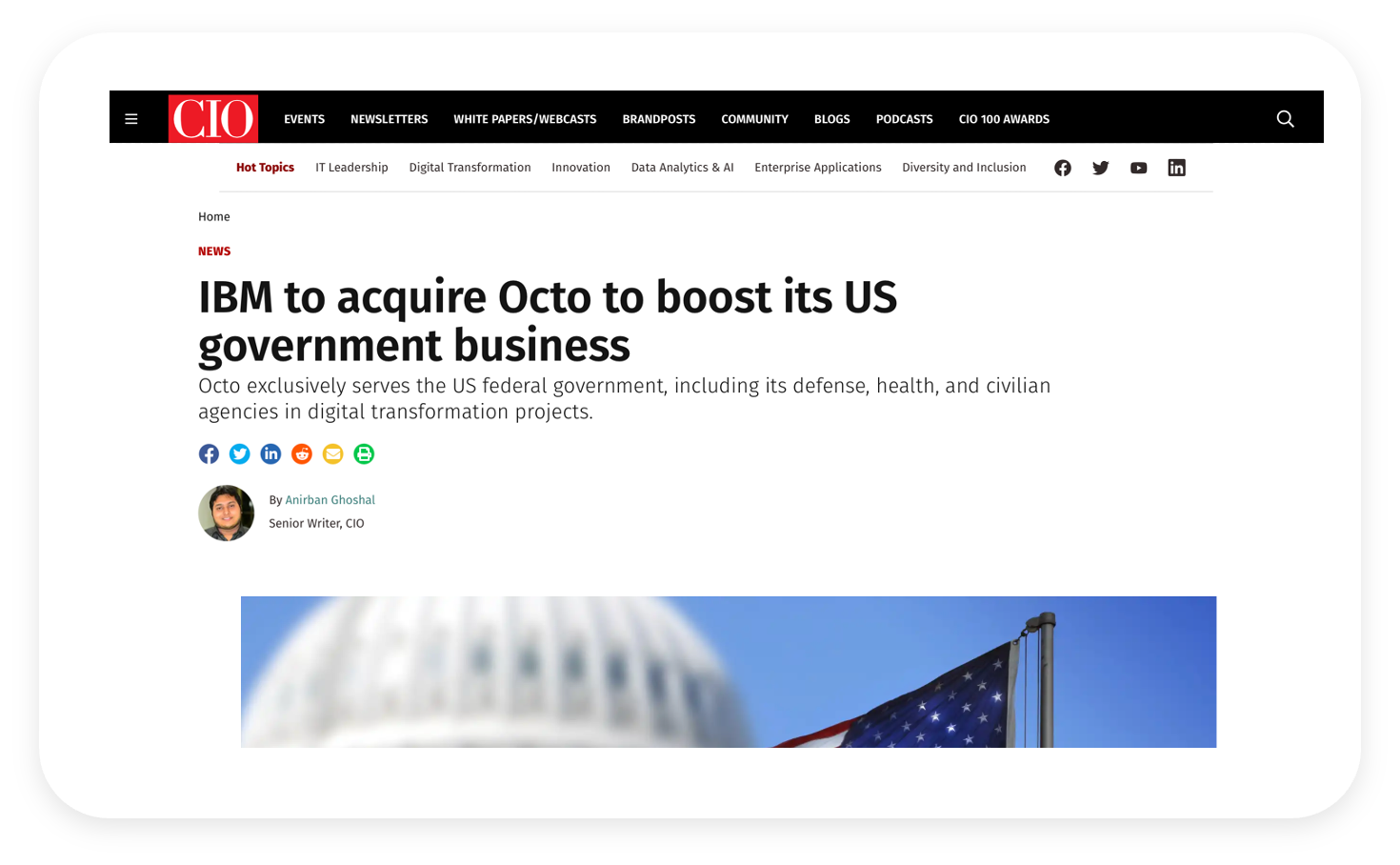

53. Cohen & Company Merged into Marcum
Summary: Marcum LLP, a national accounting and advisory services firm, merged with E. Cohen & Company, CPAs, a Rockville, Maryland-based accounting firm.
Strategic Advantage: The merger expanded Marcum’s presence in the Mid-Atlantic region and enhanced its service offerings to clients in the area.
54. Illusive Acquired by Proofpoint
Summary: Proofpoint, a cybersecurity and compliance company, acquired Illusive, a leader in Identity Threat Detection and Response (ITDR).
Strategic Advantage: The acquisition strengthened Proofpoint’s threat and information protection platforms, providing customers with a unified solution to address identity-based threats.
55. SpaceIQ Merged with iOffice to Form Eptura
Summary: SpaceIQ and iOffice, key players in workplace management software, merged to form Eptura, a unified “worktech” powerhouse. This consolidation, backed by private equity firms Thoma Bravo and JMI Equity, pooled together SpaceIQ’s integrated workplace solutions (including legacy brands Archibus and Serraview) with iOffice’s asset management tools. The merger coincided with Condeco’s integration, as all three converged to create a comprehensive workplace experience platform.
Strategic Advantages: By forming Eptura, the companies expanded their market reach and product breadth. Eptura offers end-to-end workplace and asset management, addressing hybrid work challenges with solutions for space planning, resource scheduling, and asset tracking. The combined entity leverages shared R&D to accelerate innovation and respond to the evolving “future of work” demands. With Thoma Bravo and JMI’s backing, Eptura gains financial heft to invest in technology like AI-driven workspace analytics, plus cross-selling opportunities to a broad customer base. BlueText’s branding of SpaceIQ ensured the new venture launched with a strong digital presence, clearly communicating the benefits of the merger to customers and investors.


56. Dynamyx (Inspirata) Acquired by Fujifilm
Summary: Fujifilm Healthcare acquired the Dynamyx digital pathology business from Inspirata, integrating Inspirata’s FDA-cleared digital pathology platform into Fujifilm’s medical imaging portfolio. The deal included Dynamyx software, employees, and IP, giving Fujifilm a foothold in pathology informatics.
Strategic Advantages: For Fujifilm, acquiring Dynamyx accelerates its push into digital healthcare solutions. Fujifilm established a new digital pathology division to combine Dynamyx with its Synapse® Enterprise Imaging suite, aiming to integrate pathology images into hospital EHR systems. This creates a one-stop solution for radiology and pathology imaging, streamlining cancer diagnostics for care teams. Fujifilm can now leverage Dynamyx’s open architecture and multi-scanner support to challenge other industry players (like Philips). For Inspirata, the acquisition validated its technology and allowed its pathology innovations to scale globally under Fujifilm’s umbrella. BlueText’s earlier efforts in building Inspirata’s brand narrative around patient impact likely contributed to its credibility and appeal, showcasing the power of strategic branding in M&A outcomes.
57. Revegy Acquired by Dura Software
Summary: Revegy, a sales optimization and revenue enablement software provider, was acquired by Dura Software in November 2022. Dura, known for buying “hyper-niche” software companies, made Revegy its 11th acquisition. Revegy’s platform helps enterprise sales teams manage complex accounts and relationships, functioning as a CRM-agnostic solution with 30,000 global users.
Strategic Advantages: With Revegy, Dura expanded its portfolio into sales enablement software, complementing existing holdings like 6Connex and Moki. The acquisition allows cross-pollination of technology and customers: Dura can infuse operational expertise and capital to grow Revegy’s product suite and market reach. For Revegy, joining Dura provides resources to innovate features (like AI-driven account insights) and enter new verticals under the umbrella of a company committed to “best-in-class” software solutions. Dura’s hyper-niche strategy means Revegy will receive focused attention to remain a leader in its segment. Bluetext’s emphasis on clear value storytelling in M&A would help communicate to Revegy’s clients that the acquisition strengthens long-term product support and innovation, reassuring them during the transition.
58. CertainPath Merged with Mojio
Summary: CertainPath (formerly Success Group International), a provider of software and training for home service contractors, partnered/merged with Mojio to integrate Mojio’s connected fleet management platform (“Force by Mojio”) into CertainPath’s offering. This tie-up was described as joining forces rather than a full acquisition, but it effectively merges Mojio’s telematics services with CertainPath’s contractor management systems.
Strategic Advantages: The integrated solution provides home service businesses a seamless way to manage both operations and vehicles. CertainPath’s members (plumbers, HVAC, electricians, etc.) can access real-time van/truck tracking, driver safety scores, and maintenance alerts within the same platform they use for job scheduling and invoicing. This enhances operational efficiency: contractors reduce fuel costs and improve on-time service by routing and dispatching smarter. Mojio gains distribution to CertainPath’s nationwide member base, expanding its reach in the $650B home services market. By merging software and telematics, the partnership delivers an end-to-end solution competitors will find hard to match.
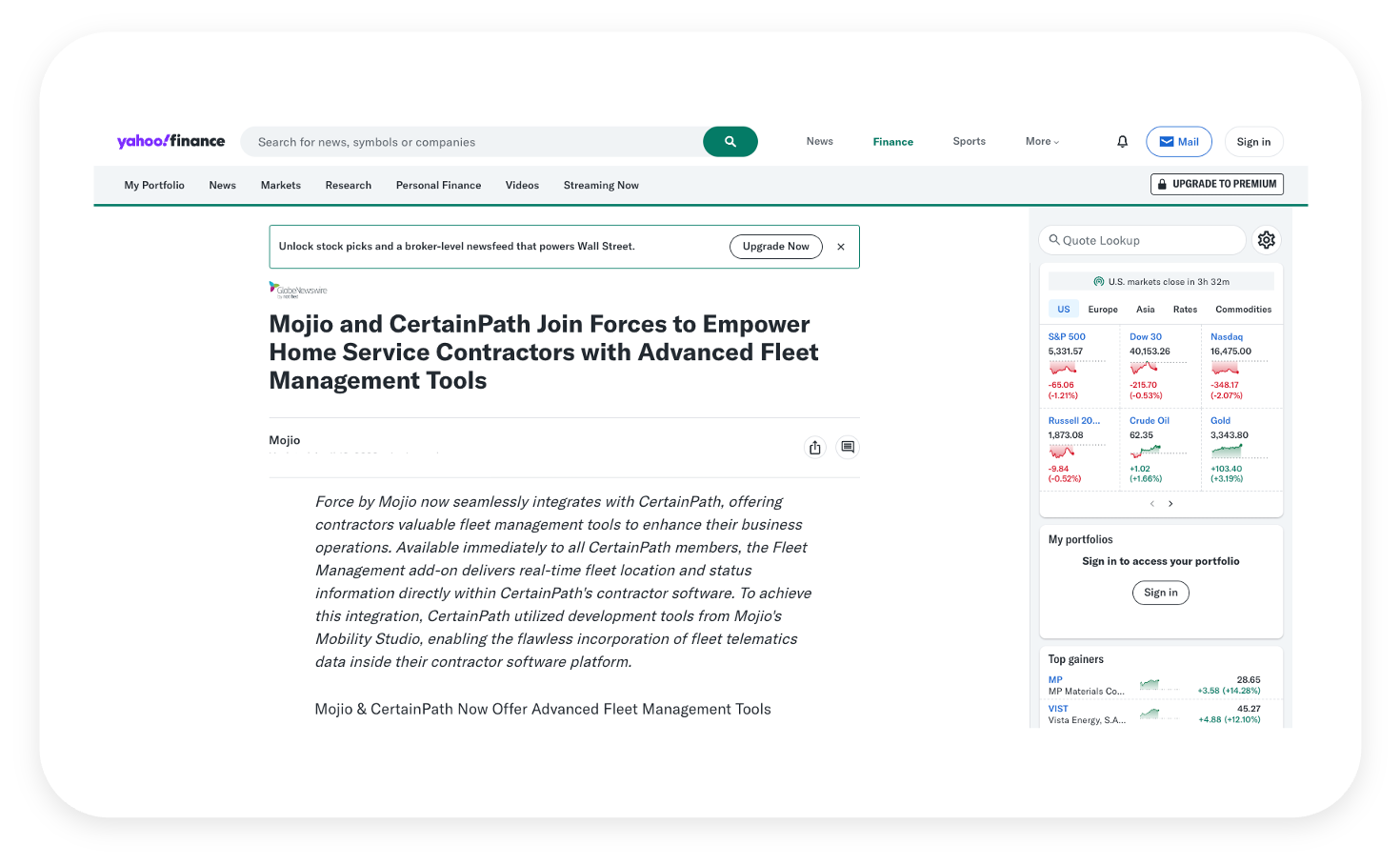

59. Micro Focus Acquired by OpenText
Summary: In a mega-software deal, Canada’s OpenText acquired UK-based Micro Focus for roughly $6 billion. The acquisition (closed in early 2023) combined OpenText’s enterprise information management cloud software with Micro Focus’s legacy IT operations, security, and DevOps tools, nearly doubling OpenText’s revenue.
Strategic Advantages: OpenText’s goal is to become one of the world’s largest software and cloud businesses. By absorbing Micro Focus, OpenText instantly added a “tremendous marquee customer base” and expanded its product portfolio into mainframe software, cybersecurity, and IT management. There’s significant cross-sell opportunity: OpenText can offer its cloud-based information management to Micro Focus’s customers, while modernizing Micro Focus’s offerings with cloud and AI capabilities. The deal also promised ~$400M in cost synergies via consolidation, though it involved workforce reductions. This scale and breadth better positions OpenText against competitors like IBM.
60. Paya Acquired by Nuvei
Summary: Nuvei, a Canadian fintech, acquired Paya (a U.S. integrated payments processor) for $1.3 billion in an all-cash deal, completed in February 2023. Paya specializes in payments embedded in software for sectors like non-profits, utilities, and B2B – complementing Nuvei’s global e-commerce payment platform.
Strategic Advantages: The acquisition created a payments powerhouse spanning global e-commerce and high-growth integrated payments. Nuvei gains Paya’s 300+ software integrations and strong foothold in U.S. B2B and government/utility payments. This diversifies Nuvei’s revenue streams, adding counter-cyclical stability (B2B and bill-pay tend to be less volatile than consumer retail). Technologically, plugging Paya into Nuvei’s platform enhances Nuvei’s offering with ACH processing, invoicing, and other capabilities Paya excels in. Nuvei’s CEO noted it speeds Nuvei’s growth into new verticals and allows them to offer a more comprehensive, “revenue-driving” payment solution to merchants.
61. Cvent Acquired by Blackstone
Summary: Event-management software leader Cvent was taken private by Blackstone in a $4.6 billion deal, completed mid-2023. Blackstone, a global PE firm, bought Cvent’s outstanding shares (at $8.50/share) and delisted the company from Nasdaq.
Strategic Advantages: As a private entity under Blackstone, Cvent can pursue long-term growth strategies away from public market pressures. Blackstone’s investment provides capital and industry connections (especially in hospitality) to help Cvent innovate its SaaS for meetings and events. The deal came as tech valuations dipped, giving Blackstone a bargain for a firm once valued higher. Blackstone can streamline Cvent’s operations (they reportedly planned cost cuts and workforce optimization) and potentially merge Cvent with other portfolio companies to expand its reach (e.g., combining with venue or travel tech assets). For Cvent, the infusion of resources and strategic guidance means accelerated development of its event marketing platform and possibly acquisitions of complementary tech (indeed, after going private, Cvent quickly acquired other software like Jifflenow).
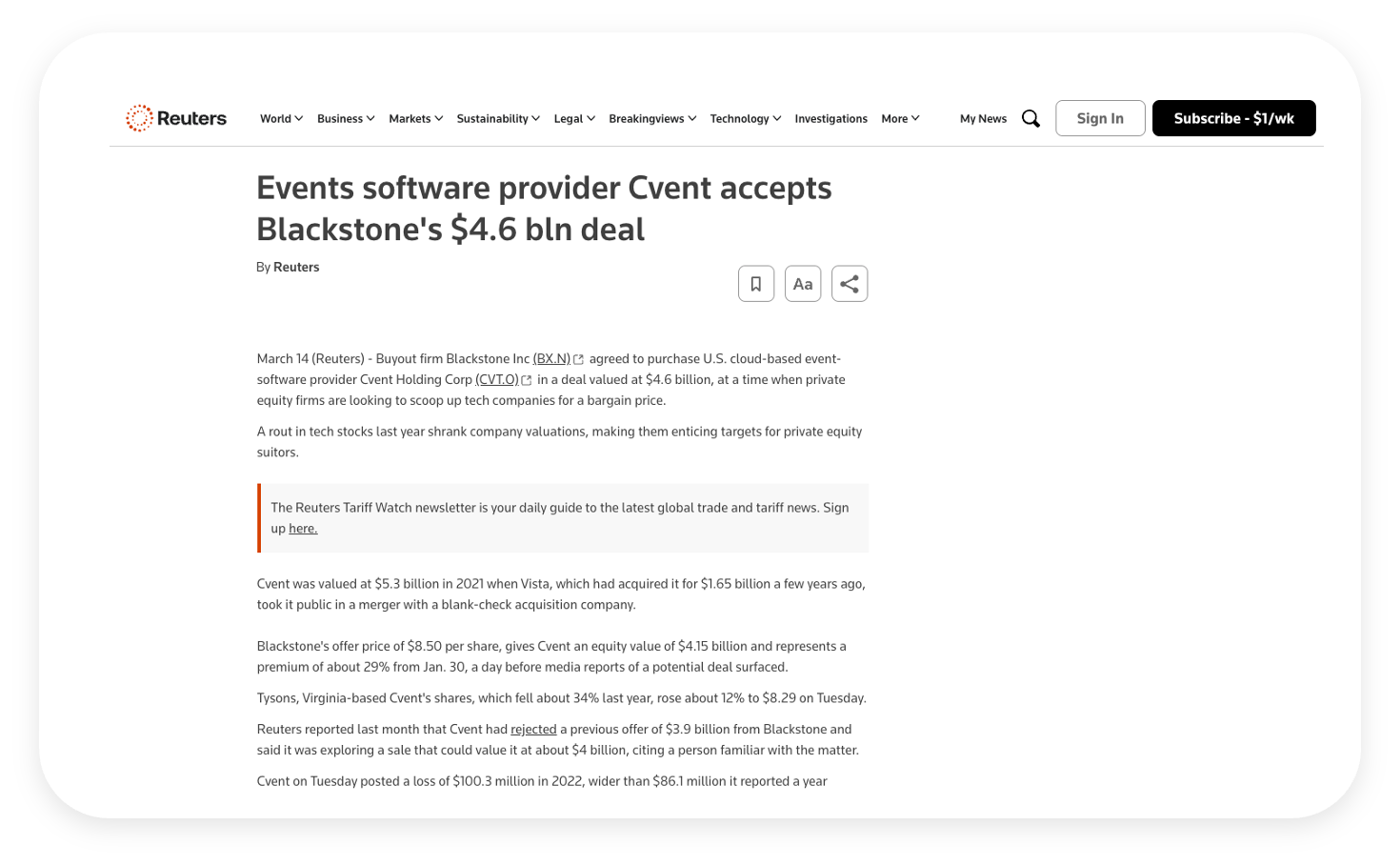

62. LookingGlass Acquired by ZeroFox
Summary: External cybersecurity firm ZeroFox (focused on digital risk protection) acquired LookingGlass Cyber Solutions for about $26 million in 2023. LookingGlass brought expertise in external attack surface management (EASM) and threat intelligence, complementing ZeroFox’s social media and digital threat hunting platform.
Strategic Advantages: The acquisition allowed ZeroFox to offer a full-spectrum external cyber risk platform. By folding in LookingGlass, ZeroFox added capabilities to monitor clients’ entire internet-facing footprint (domains, IPs, infra) and not just social/digital channels. This broadens ZeroFox’s value proposition to CISO customers: one vendor for brand protection, dark web monitoring, and attack surface reduction. Financially, acquiring at $26M (primarily in stock) was relatively inexpensive, leveraging ZeroFox’s then-public stock currency. Post-IPO, ZeroFox likely sought growth via acquisitions to meet shareholder expectations. With LookingGlass, ZeroFox could upsell new services to its base and attract larger enterprise deals with a more comprehensive suite.
63. VMware Acquired by Broadcom
Summary: Broadcom Inc. – known for semiconductors and enterprise software – acquired VMware for approximately $69 billion in a cash-and-stock deal. Finalized in late 2023 after regulatory delays, this landmark merger combined Broadcom’s infra and security software (CA, Symantec enterprise) with VMware’s cloud and virtualization suite.
Strategic Advantages: Broadcom aims to build “the world’s leading infrastructure technology company”. With VMware, Broadcom gains a dominant position in multi-cloud services used by enterprises globally. The strategic logic: pair Broadcom’s existing mainframe and security software with VMware’s cloud offerings to sell an integrated stack to large customers. The deal also nearly doubles Broadcom’s software revenue, diversifying beyond semiconductors. Broadcom touts significant synergies – both cost (via efficiencies, unfortunately including layoffs) and revenue (by cross-selling VMware to its clients). There are innovation benefits too: Broadcom’s resources can help VMware accelerate R&D in cloud networking, AI integration, and edge computing. For VMware users, Broadcom has pledged to continue support and investment (though some customers have warily watched pricing). Communication strategy would stress continuity and enhanced support: “VMware’s innovation + Broadcom’s scale = better solutions for your multi-cloud future”.
64. Imageware Systems Acquired by TECH5
Summary: Swiss-based biometrics company TECH5 acquired the assets of Imageware Systems (a U.S. biometric authentication firm) in early 2023. The deal included all software, patents, and key staff of Imageware, known for biometric identity management solutions for law enforcement and enterprise.
Strategic Advantages: This acquisition strengthened TECH5’s presence in North America and broadened its biometric product suite. TECH5, which provides fingerprint, face, and iris recognition tech, can integrate Imageware’s user-friendly biometric software (including its multimodal biometric management platform) to offer more complete solutions. Gaining Imageware’s patents accelerates TECH5’s innovation pipeline and possibly opens new verticals (Imageware had government and law enforcement clients). Importantly, TECH5 can reassure Imageware’s existing customers by continuing support and improving the acquired products with TECH5’s AI algorithms. The combination promises “the best UI and AI-driven authentication software” under one roof. Marketing wise, TECH5 pitched this as combining TECH5’s biometrics engines with Imageware’s proven front-end solutions, delivering more accurate and user-friendly ID systems.
65. RiskLens Acquired by Safe Security
Summary: Safe Security, a Palo Alto-based cyber risk management firm, acquired RiskLens in mid-2023. RiskLens is the pioneer of cyber risk quantification using the FAIR model (Factor Analysis of Information Risk). By joining forces, Safe Security aimed to create the undisputed leader in Cyber Risk Quantification (CRQ) and management.
Strategic Advantages: The combination marries RiskLens’ quantitative risk modeling with Safe’s real-time risk scoring platform, yielding a comprehensive view of cyber risk in financial terms. Customers benefit from automated, data-driven risk assessments that align with business impact – essentially, a “single pane of glass” for CISOs to prioritize security investments. Safe Security can now answer Board-level questions (“How much risk in dollars are we carrying?”) by leveraging RiskLens’ FAIR-standard calculations, something competitors may lack. This move differentiates Safe in the $4B CRQ market as a one-stop leader. Culturally, both companies focus on translating cyber metrics into business language, so integration is smoother. The strategic messaging is about transformation: “Together, we transform cyber risk management from guesswork into science.” This resonates with enterprise clients and was indeed the pitch – empowering customers with a real-time, standard model to manage risk proactively. In sum, Safe + RiskLens gives enterprises a powerful tool to make smarter, financially grounded security decisions, reinforcing Safe’s vision of holistic, AI-driven cyber risk management.
66. Ardent Acquired by Mission1st Group
Summary: Government IT contractor Mission1st Group acquired Ardent Management Consulting (Ardent MC) in mid-2024. Ardent is a 17-year-old digital transformation and geospatial analytics provider for federal agencies, and Mission1st (a veteran-owned firm) focuses on defense IT and engineering.
Strategic Advantages: This acquisition combines Mission1st’s defense market success with Ardent’s deep civilian agency expertise. Mission1st can now offer a broader slate of services – from military communications support to civilian agency cloud and data analytics – under one roof. For Ardent, joining Mission1st brings scale and access to Mission1st’s defense contracts, potentially opening new revenue streams (e.g., applying Ardent’s geospatial tech to DoD needs). The two companies’ capabilities are complementary, allowing cross-pollination of solutions (like Ardent’s location intelligence for Mission1st’s Army clients, or Mission1st’s cyber skills for Ardent’s DHS clients). Leadership quoted in the announcement highlighted leveraging “collective strengths” to enhance delivery for all customers. Strategically, the deal creates a mid-sized GovCon competitor with both DoD and civilian past performance – making them more competitive for large multi-agency IT contracts. Communications wise, the integration likely rebranded Ardent as “Ardent, a Mission1st company,” focusing on continuity of services.
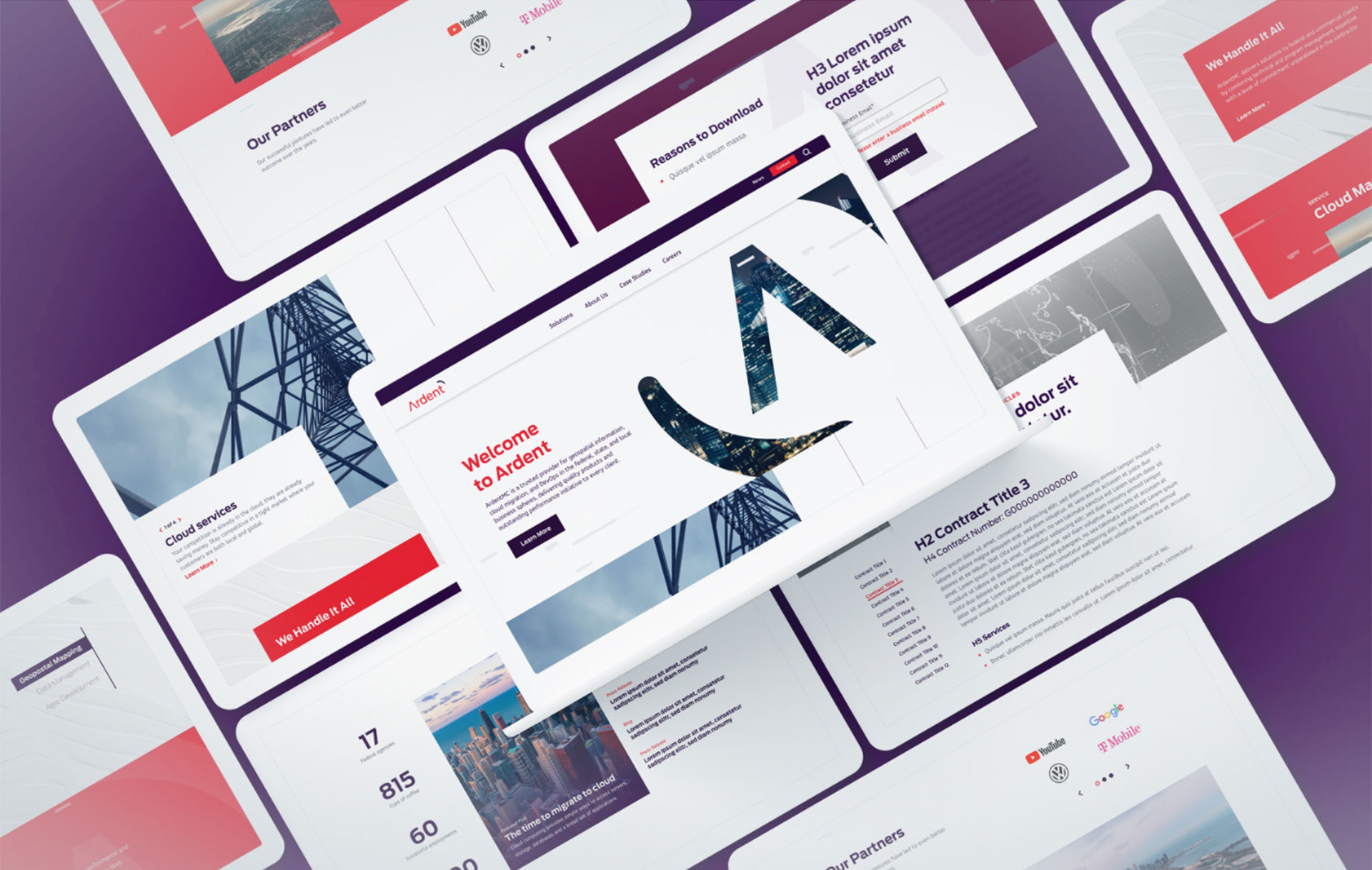

67. Verve Industrial Acquired by Rockwell Automation
Summary: Industrial automation giant Rockwell Automation acquired Verve Industrial Protection (an OT/ICS cybersecurity firm) in late 2023. Verve offers a unified platform for asset discovery, vulnerability assessment, and threat monitoring in operational technology (factory and utility networks).
Strategic Advantages: Rockwell’s acquisition of Verve reflects the trend of IT-OT convergence: marrying industrial controls with robust cybersecurity. By embedding Verve’s vendor-neutral OT security platform into its offerings, Rockwell can now deliver a turnkey solution to its manufacturing and energy customers – not just automating processes but also securing them. This is a critical differentiator as cyber threats to critical infrastructure rise. The move expands Rockwell’s suite in its software & services segment, likely offering Verve’s solution alongside Rockwell’s FactoryTalk software. Rockwell gains Verve’s domain expertise and its established client base in industries like oil & gas and utilities. Moreover, Verve’s capability to secure multi-vendor environments appeals to customers who run mixed control systems. Financially, at an estimated $190M price, it’s a relatively small acquisition for Rockwell with potentially big returns via new service contracts and recurring revenue (cyber monitoring subscriptions). In terms of marketing, Rockwell can now message a “secure automation” story: “We not only optimize your operations, we protect them.” That alignment of mission likely guided the communications around the deal, emphasizing enhanced reliability and safety for clients.
68. ZeroFox Acquired by Haveli
Summary: In May 2024, ZeroFox – a Baltimore-based external cybersecurity firm – was acquired and taken private by Haveli Investments for $350M. Haveli, a tech-focused PE firm in Austin, paid $1.14/share, a 45% premium on the 90-day stock price, and delisted ZeroFox from the Nasdaq.
Strategic Advantages: Going private under Haveli gives ZeroFox capital and strategic support to scale without public market pressure. Haveli likely sees long-term potential in ZeroFox’s platform (which includes AI threat intelligence, digital risk protection, and recent acquisitions like LookingGlass). With Haveli’s backing, ZeroFox can invest in R&D (perhaps developing new AI-driven threat disruption tools) and pursue new go-to-market channels (like MSSP partnerships or global expansion). The infusion of resources comes at a crucial time as cybersecurity threats proliferate; ZeroFox can now expand its external threat intelligence network and automation (“Disruption”) capabilities. Also, Haveli’s network might help ZeroFox land larger enterprise deals or federal contracts. For ZeroFox’s existing customers, Haveli’s ownership was positioned as a positive: more focus on innovation and customer success rather than quarterly earnings. Messaging from the CEO echoed this, noting the partnership will help “build a safer digital world” and accelerate product innovation. In short, as a private company ZeroFox can be more agile and aggressive in a fast-moving cyber market.
69. Eqlipse Technologies Acquired by BlueHalo
Summary: In early 2024, BlueHalo – a fast-growing defense tech firm – announced it will acquire Eqlipse Technologies, a provider of cybersecurity, signals intelligence, and cyber solutions to DoD and the Intelligence Community. Both were Arlington Capital portfolio companies, effectively merging under BlueHalo’s banner.
Strategic Advantages: Combining BlueHalo and Eqlipse creates a mid-tier defense tech powerhouse nearing $1B in revenue with 2,400 employees. BlueHalo gains Eqlipse’s high-end talent and products in cyber and RF sensing, enhancing BlueHalo’s capabilities in Space, c-UAS, electronic warfare, and AI. The merged entity can bid more competitively on large DoD programs, positioned as an alternative to the biggest primes by offering innovation without bureaucracy. Eqlipse was less than a year old under that brand, and now its identity and offerings bolster BlueHalo’s portfolio (indeed, BlueHalo cited Eqlipse’s contribution to Space Force’s $1.4B SCAR program). Culturally and strategically, both companies share a focus on rapid prototyping and mission-focused R&D, which the merger amplifies.
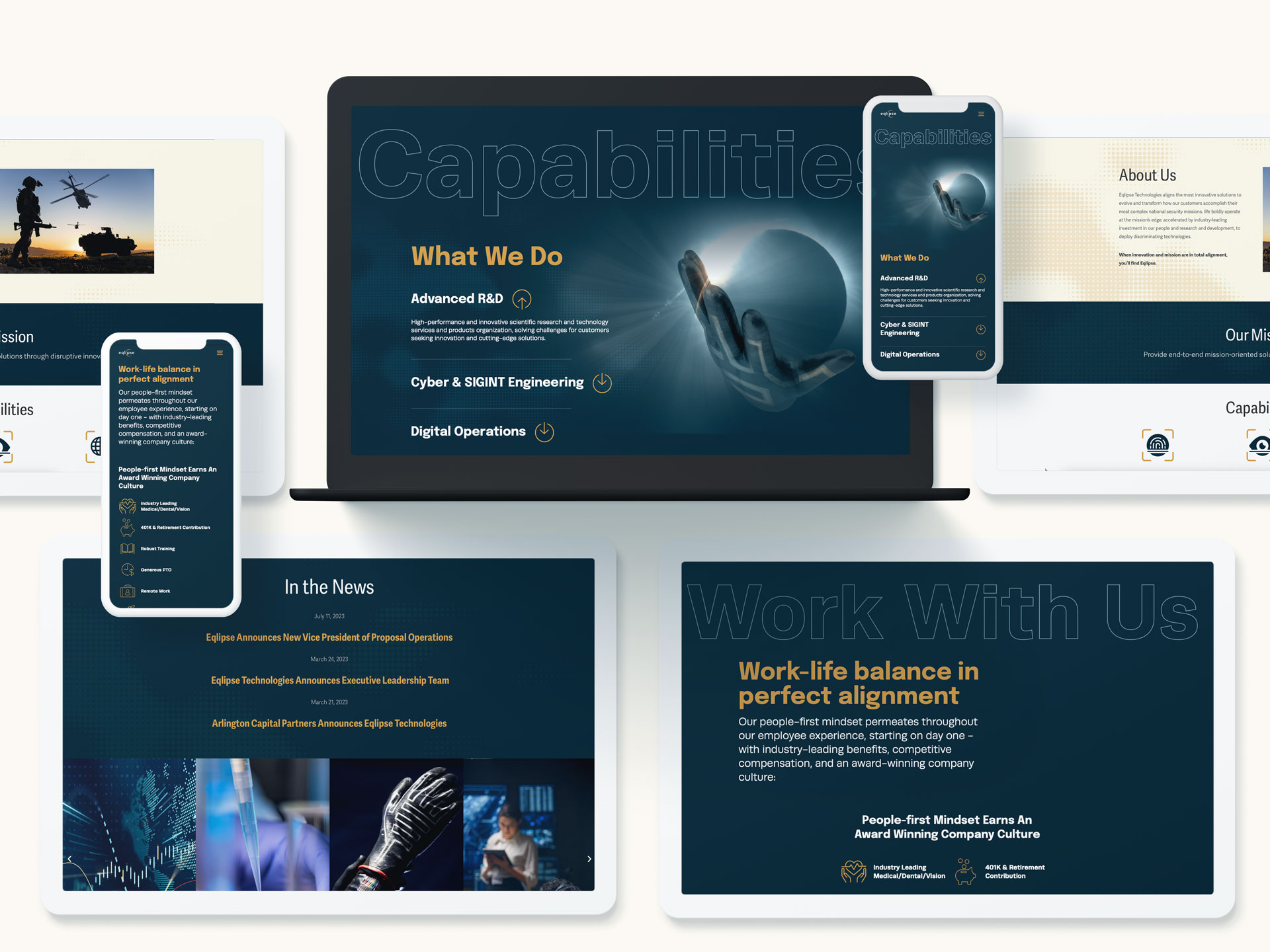

70. Fastpath Acquired by Delinea
Summary: Privileged access management (PAM) company Delinea acquired Fastpath Solutions, an identity governance and access control software provider, closing in April 2024. Fastpath’s products help manage user access rights and SOD (segregation of duties) across business applications like ERP systems.
Strategic Advantages: The acquisition enables Delinea to offer an end-to-end identity security platform, blending PAM with Identity Governance and Administration (IGA). With Fastpath, Delinea can dynamically control user permissions in applications (like finance or HR systems) in addition to managing privileged accounts on servers and endpoints. This means customers get a unified view of who has what access and the ability to remediate risks (like over-privileged users or toxic combinations of access) automatically. As cybersecurity moves toward zero trust and least privilege, merging these capabilities is powerful. Delinea’s CEO said it solves complex identity challenges by connecting previously siloed solutions. It also positions Delinea against giants like CyberArk or SailPoint by having both PAM and IGA in-house. For Fastpath’s part, integration into Delinea’s cloud platform means its features can reach a wider market and be enhanced by Delinea’s identity threat detection tech. Communications perspective: likely emphasized “modernizing identity security with intelligent authorization.”
71. Intelsat Acquired by SES
Summary: In April 2024, European satellite operator SES S.A. announced plans to acquire Intelsat for $3.1 billion in cash. This merger, pending regulatory approval (expected to close by late 2024 or 2025), would combine two of the world’s largest geostationary satellite services providers, creating a multi-orbit (GEO + MEO) communications behemoth.
Strategic Advantages: The SES-Intelsat merger would yield massive scale and synergies in the satellite industry. Together they’d control ~70 satellites and a deep global customer base in video, data, and government segments. SES touted €2.4B NPV in synergies (mostly cost savings and network integration benefits) with much realized within 3 years. A combined SES-Intelsat can offer customers integrated GEO and MEO (Medium Earth Orbit) solutions – SES’s O3b mPOWER MEO constellation complemented by Intelsat’s GEO fleet – to provide more flexible and resilient connectivity. This is crucial as competition from SpaceX Starlink (LEO) and others heats up; multi-orbit capabilities are a key differentiator. Additionally, consolidation reduces overlapping expenses in launch, ground infrastructure, and R&D, allowing more investment in next-gen satellites and services (like direct-to-device communication). For Intelsat, joining SES ends years of merger speculation and adds stability via SES’s stronger balance sheet. The combined entity can also better manage C-band spectrum transitions and monetization. Communication highlights include “creating a stronger and more competitive operator with expanded network and increased revenue in growth segments.”
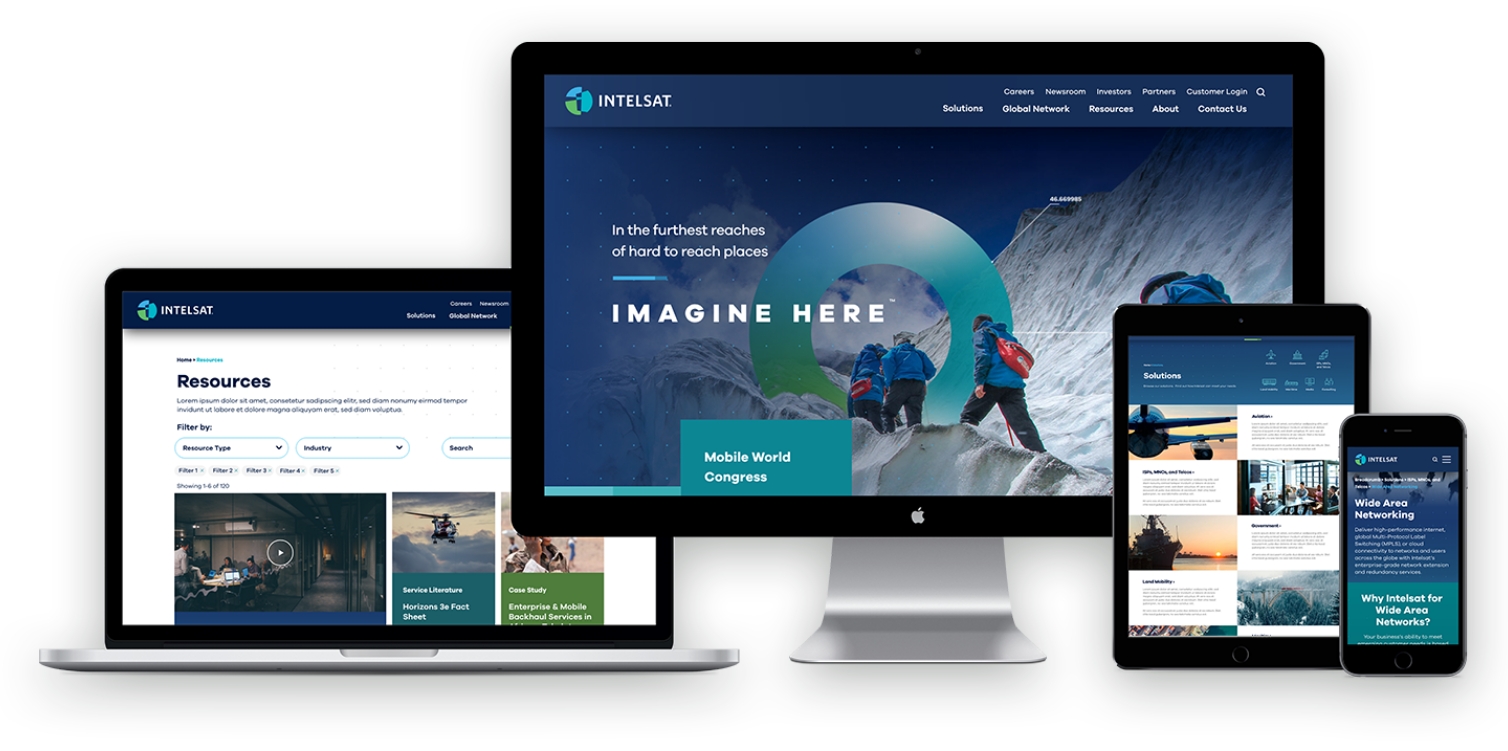

72. Keyloop Acquired Automotive Transformation Group (ATG)
Summary: UK-based automotive retail software provider Keyloop acquired Automotive Transformation Group (ATG) in May 2024. Keyloop (a Francisco Partners portfolio company, formerly part of CDK Global) offers dealer management systems (DMS) and digital solutions for car dealerships, while ATG (backed by Inflexion PE) provides an omnichannel e-commerce platform for car sales (from online reservations to showroom tools).
Strategic Advantages: The deal aims to create an integrated technology portfolio connecting the entire automotive consumer journey. By combining Keyloop’s back-end dealership software with ATG’s front-end retailing tools, the merged company can offer car manufacturers and dealers a seamless solution: from customer interest and online purchase, through financing and inventory management, to after-sales service. This meets the industry’s need for “omnichannel retailing” – consumers expect to transition smoothly between online car shopping and in-store experiences. Keyloop + ATG can facilitate things like online car configuration and pricing that flow directly into the dealer’s systems for a test drive or delivery scheduling. This streamlined customer experience can help dealerships increase sales conversions and improve customer satisfaction. Additionally, the acquisition expands Keyloop’s market share in Europe by adding ATG’s clients, and potentially allows cross-selling (Keyloop’s CRM or DMS to ATG customers, and vice versa). Efficiency-wise, integrated R&D can accelerate innovations like better data analytics for dealers.
73. Courvoisier Acquired by Campari
Summary: Italian spirits company Campari Group acquired Courvoisier, the famed French cognac brand, from Beam Suntory for €1.1B (~$1.2B) in December 2023. This was Campari’s largest deal ever, bringing one of the “big four” Cognac houses into its portfolio.
Strategic Advantages: The acquisition solidifies Campari’s push into the premium brown spirits category. Courvoisier becomes Campari’s fourth pillar (after aperitifs like Aperol, bourbon, and tequila). Strategically, it gives Campari a renowned Cognac to compete with Diageo’s Hennessy partnership and Pernod Ricard’s Martell in key markets. Immediately, it boosts Campari’s sales by ~9% and brings a spirit category (cognac) that’s seeing growth in the U.S. and China. For Campari, which previously only had a smaller cognac (Bisquit) and Grand Marnier (an orange liqueur with cognac base), acquiring Courvoisier fills a portfolio gap and diversifies its revenue. It also provides scale in the supply chain for cognac (aging stocks, production in Jarnac, etc.). Campari can leverage its global distribution to expand Courvoisier’s reach, especially in Asia-Pacific where cognac demand is strong. The brand equity of Courvoisier (associated with luxury and even pop culture) adds prestige to Campari’s lineup. CEO Kunze-Concewitz, about to retire, called it a “crowning achievement”, signaling its strategic importance. Marketing-wise, Campari can now tell a richer story of being a curator of iconic brands from bitters to cognac, appealing to premiumization trends. They might invest in Courvoisier’s branding (packaging, campaigns) as they did after acquiring Grand Marnier.


74. Axient Acquired by Astrion
Summary: Astrion, a Brightstar Capital Partners portfolio company, completed the acquisition of Axient (backed by Sagewind Capital) in September 2024. Astrion is a mission support and engineering contractor for U.S. government (recently formed, possibly combining former BRG assets), while Axient is a well-known defense and aerospace solutions provider (formed from a 2021 merger of QuantiTech, Millennium, Dynamic Concepts, etc.).
Strategic Advantages: By acquiring Axient, Astrion aims to set a new industry standard through enhanced scale and capabilities. The combined company addresses critical missions across defense and civilian agencies, spanning cybersecurity, systems engineering, space operations, and digital transformation. Essentially, Astrion + Axient creates a mid-sized powerhouse with end-to-end solutions, from R&D and testing (Axient’s forte in space and missiles) to operational mission support (Astrion’s focus). This breadth means they can bid on larger contracts and deliver more integrated offerings. For Axient’s customers (Space Force, Missile Defense, etc.), Astrion’s backing brings additional resources and capital to drive innovation – fulfilling the promise of “Accelerate Possible” that Bluetext helped brand. From Astrion’s perspective, acquiring Axient injects a large, experienced workforce (Axient had thousands of employees) and key contract vehicles, accelerating Astrion’s growth trajectory by years. The press release noted “benefits of scale” and expectation of substantial growth and exceptional outcomes. Private equity sponsors (Brightstar and Sagewind) also likely realize synergies: merging back-office functions and unifying go-to-market could improve margins.


75. Aeyon Acquired by CGI Federal
Summary: In late 2023, CGI Federal (U.S. arm of global IT firm CGI Inc.) acquired Aeyon, a rapidly growing consultancy specialized in AI, Robotic Process Automation (RPA), and financial management for U.S. federal agencies. Aeyon, backed by Enlightenment Capital, itself was formed by merging Artlin and Sehlke in 2021, with Bluetext’s help in branding (they crafted the Aeyon name and launch messaging, per their blog with CEO Sunny Singh discussing branding through M&A).
Strategic Advantages: For CGI Federal, acquiring Aeyon expands its capabilities in emerging tech and defense support services. Aeyon brings strong past performance in DoD financial management, Army robotics process automation, and Navy data analytics, complementing CGI’s traditional IT services. This helps CGI deepen relationships in national security agencies (Aeyon’s client list included defense and intelligence agencies). It also infuses entrepreneurial talent into CGI’s rather large organization – Aeyon’s leadership is known for agility and innovation. CGI cited the move as broadening its offerings in AI and automation for federal clients, aligning with government demand for digital transformation. Aeyon’s experience with the DoD’s financial systems and the JAIC’s AI initiatives can be leveraged across CGI’s wider client base. The acquisition underscores CGI’s strategy to grow via “build and buy,” adding niche expertise to bolster its federal footprint.
76. Marcum’s Non-Attest Business Acquired by CBIZ
Summary: In a major accounting industry deal, CBIZ, Inc. (a national professional services firm) acquired the non-attest business of Marcum LLP in early 2025, following Marcum’s splits from its audit practice (due to regulatory rules). This effectively merged Marcum’s tax and consulting practice into CBIZ, making CBIZ a top-10 accounting firm with 160+ offices and 10,000+ employees.
Strategic Advantages: This acquisition propelled CBIZ into the elite ranks of accounting and advisory firms. By absorbing Marcum’s advisory business, CBIZ significantly expanded its geographic reach (Marcum was strong in the Northeast and Florida) and service offerings (like capital markets advisory, specialized consulting) without conflicting with audit independence (since attest stayed separate). CBIZ can now cross-sell a broader suite of services to both client bases, e.g., offering Marcum’s consulting expertise to CBIZ’s mid-market clients and vice versa. Economies of scale in back-office functions and vendor relationships will improve margins. Importantly, the combined firm’s national presence and talent pool make it more competitive for large engagements that require depth and breadth.
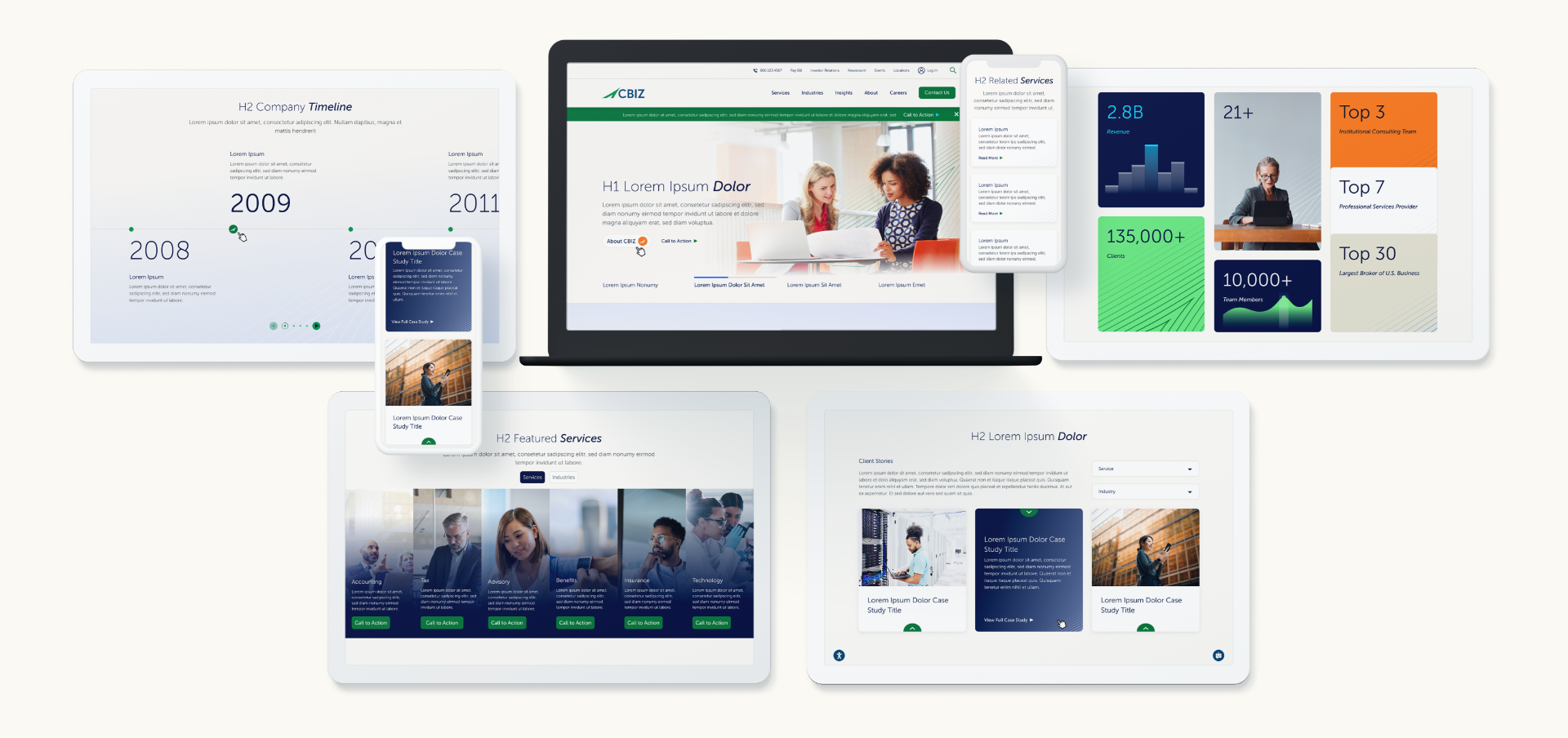

77. Amelia Acquired by SoundHound
Summary: SoundHound AI, Inc., known for voice AI and speech recognition, acquired Amelia (IPsoft’s Amelia) for $80M in August 2024. Amelia is a conversational AI and digital assistant platform (originally from IPsoft) used by enterprises for customer service and IT support automation.
Strategic Advantages: This acquisition significantly expanded SoundHound’s scale and product reach in the booming conversational AI market. SoundHound primarily offered voice interface tech (e.g., for automotive and restaurants) and had gone public via SPAC in 2022. By adding Amelia, a leader in enterprise AI agents, SoundHound doubled its customer count to ~200 (including Fortune 500 companies) and projected combined 2025 revenue of $150M. It allowed SoundHound to diversify from its core voice applications into the broader digital assistant space (text-based chatbots, call center AI, etc.) – a timely move as generative AI drives demand for advanced virtual agents. Financially, paying $80M (mostly cash/equity) for a company that raised ~$189M was a bargain. SoundHound also assumed Amelia’s existing enterprise contracts (with big names like BNP Paribas and Fujitsu) and deep AI tech stack. The synergy is clear: SoundHound’s voice understanding + Amelia’s conversational workflows = next-gen AI assistants across voice and text. Post-acquisition, SoundHound could offer an end-to-end voice and chat solution, enhancing upsell opportunities. The deal also improved SoundHound’s financial outlook after a rough 2023 (stock was down, layoffs happened). With Amelia’s $45M revenue on board, SoundHound inches closer to profitability while expanding markets (IT helpdesk automation, etc.).
78. Applied Insight Acquired by CACI
Summary: Federal IT contractor CACI International acquired Applied Insight in late 2024. Applied Insight (AI LLC), backed by The Acacia Group, is a cloud and analytics firm specializing in secure cloud migration, DevSecOps, and advanced cyber for the U.S. intelligence community (IC).
Strategic Advantages: This acquisition enhanced CACI’s cloud and mission IT offerings, particularly for classified environments. Applied Insight brought its alt-cloud platform (for secure AWS/Azure in air-gapped settings) and analytics tools like SHIFT, which help simulate classified cloud setups locally – key for intel and defense clients. Integrating this, CACI can now offer full-stack enterprise IT modernization, from infrastructure to application development, with the high security the IC demands. It aligns with CACI’s strategy to invest in high-growth tech areas. Notably, Applied Insight’s work with agencies like DHS and DoD expands CACI’s customer footprint and contract vehicles. CACI’s CEO noted the combined business will “enhance cloud, cyber, and user productivity for secure networks in the IC”, indicating synergy with CACI’s existing intel support business. Financially, while terms weren’t disclosed, Applied Insight’s ~$40M+ revenue (estimate) adds to CACI’s ~$6B, so it’s a tuck-in focused on capability gains rather than scale. It also preempted competition – preventing rivals from acquiring that tech.
79. Critical Insight Acquired by Lumifi
Summary: Lumifi (formerly SilverSky), a managed detection and response (MDR) provider, acquired Critical Insight in late 2024. Critical Insight, founded by ex-CISO Mike Hamilton, offers MDR and cybersecurity-as-a-service with a strong focus on healthcare and public sector clients. This was Lumifi’s third acquisition in 13 months, following rebranding from Cygilant/SilverSky, as it aggressively consolidates the MDR market.
Strategic Advantages: The acquisition doubles down on Lumifi’s healthcare and critical infrastructure market presence. Critical Insight brings a 24/7 SOC, incident response team, and professional services that complement Lumifi’s threat monitoring and “ShieldVision” platform. Essentially, Lumifi broadens its service portfolio: adding Critical Insight’s incident response and vCISO consulting to its MDR tech stack. Geographically, Critical Insight’s West Coast roots (Seattle) and client base (hospitals, local governments) extend Lumifi’s reach. By integrating, they likely achieve some economies (shared SOC infrastructure, unified platform development) and can present a stronger value prop: full lifecycle cyber defense, from prevention to response, tailored for regulated sectors. The press release highlighted this strengthening of offerings and presence in healthcare/critical infrastructure. It’s part of Lumifi’s strategy to grow both organically and via acquisition, aiming to build enough scale to perhaps IPO or be acquired itself. Each acquisition (Infocyte, Cysiv earlier, now Critical Insight) added either technology or market share. With Critical Insight, Lumifi also gains experienced practitioners (e.g., Critical Insight’s leadership includes former government security officials) which bolsters credibility.
80. AeroVironment Acquires BlueHalo
Summary: In early 2025, defense technology leader AeroVironment acquired BlueHalo, a rapidly growing provider of advanced defense solutions spanning space, directed energy, cyber, and AI/ML-powered C5ISR systems. BlueHalo, backed by Arlington Capital Partners, had grown aggressively through acquisitions and internal R&D, carving out a leadership position in cutting-edge national security tech. AeroVironment, traditionally known for tactical UAS (unmanned aerial systems), positions this acquisition as a strategic leap into the higher end of the defense technology spectrum.
Strategic Advantages: This acquisition gives AeroVironment access to BlueHalo’s advanced capabilities in space and directed energy—domains increasingly prioritized in the Pentagon’s modernization roadmap. BlueHalo’s portfolio also includes proprietary technologies in autonomy, AI/ML, and RF engineering, which enhance AeroVironment’s offering beyond small UAS. The combined entity now covers a broader mission set: from tactical ISR and loitering munitions to space domain awareness and counter-UAS defense systems. BlueHalo’s government customer base (including key classified programs and defense R&D agencies) complements AeroVironment’s existing DoD footprint, while BlueHalo’s East Coast presence (HQ in Arlington, VA, plus facilities in Alabama, New Mexico, and Maryland) expands AeroVironment’s geographic and programmatic reach. This scale could also improve pipeline access to large IDIQs and OTA contracts.
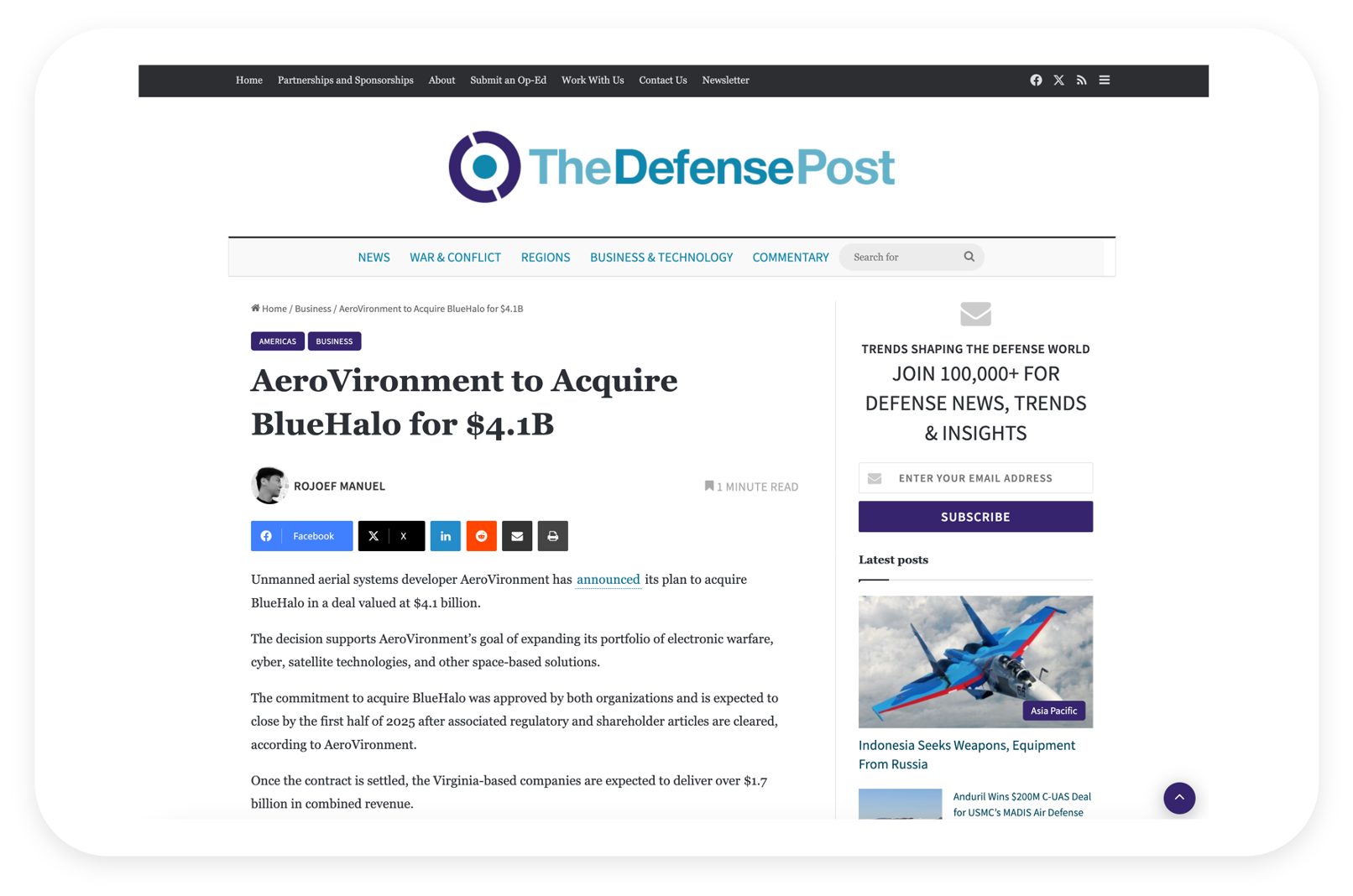

81. Karman Space & Defense Files for IPO
Summary: In early 2025, Karman Space & Defense confidentially filed for an initial public offering, positioning itself as one of the first pure-play space and hypersonics manufacturers to seek a public listing. Formed through the combination of multiple heritage aerospace and defense suppliers—most notably AAE Aerospace, Systima Technologies, and Bal Seal Engineering—Karman has rapidly scaled into a vertically integrated supplier of mission-critical hardware for the space launch, missile defense, and hypersonic sectors. The IPO marks a milestone not just for Karman, but for the broader emergence of space-adjacent industrial players as viable public-market entities.
Strategic Advantages: Karman’s growth story is driven by consolidation, modernization, and smart positioning. By integrating legacy defense suppliers under one roof, it built a scalable manufacturing footprint tailored for the new space race—supporting both commercial launch providers and prime contractors. Its capabilities span nose cones, separation mechanisms, and propulsion-adjacent hardware—essential components for both reusable launch systems and advanced missile architectures. Karman’s competitive edge lies in its speed-to-market, vertically integrated facilities, and ability to deliver high-reliability components at production scale. With government investment in hypersonics and resilient space architectures rising sharply, Karman sits in the sweet spot: a defense-grade manufacturer that’s nimble enough to support new entrants like Rocket Lab or Firefly, but qualified enough for classified DoD and MDA programs.
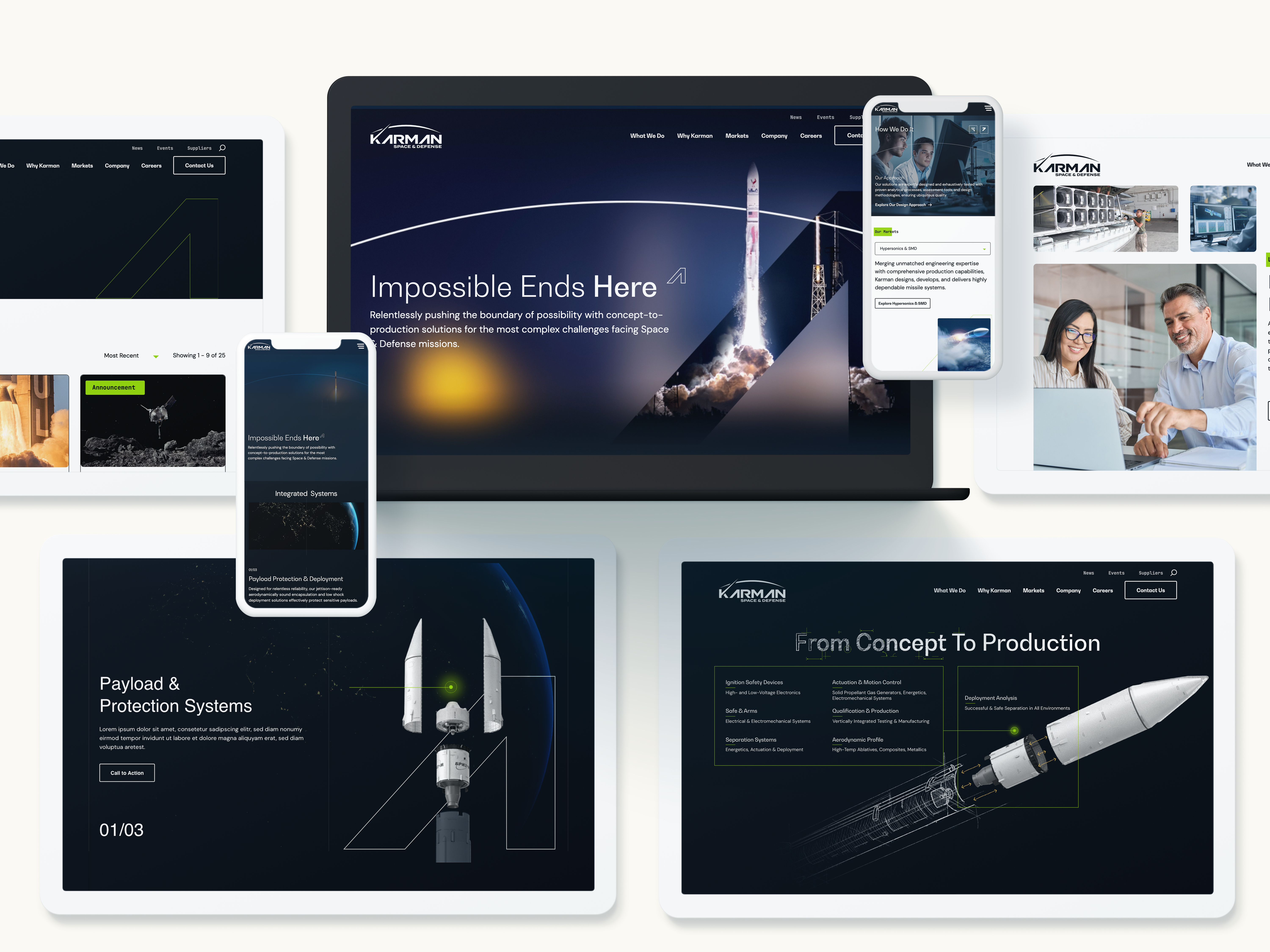

82. Anduril Acquires Klas
Summary: In early 2025, Karman Space & Defense confidentially filed for an initial public offering, positioning itself as one of the first pure-play space and hypersonics manufacturers to seek a public listing. Formed through the combination of multiple heritage aerospace and defense suppliers—most notably AAE Aerospace, Systima Technologies, and Bal Seal Engineering—Karman has rapidly scaled into a vertically integrated supplier of mission-critical hardware for the space launch, missile defense, and hypersonic sectors. The IPO marks a milestone not just for Karman, but for the broader emergence of space-adjacent industrial players as viable public-market entities.
Strategic Advantages: Karman’s growth story is driven by consolidation, modernization, and smart positioning. By integrating legacy defense suppliers under one roof, it built a scalable manufacturing footprint tailored for the new space race—supporting both commercial launch providers and prime contractors. Its capabilities span nose cones, separation mechanisms, and propulsion-adjacent hardware—essential components for both reusable launch systems and advanced missile architectures. Karman’s competitive edge lies in its speed-to-market, vertically integrated facilities, and ability to deliver high-reliability components at production scale. With government investment in hypersonics and resilient space architectures rising sharply, Karman sits in the sweet spot: a defense-grade manufacturer that’s nimble enough to support new entrants like Rocket Lab or Firefly, but qualified enough for classified DoD and MDA programs.
What’s Next: M&A as a Messaging Moment
These 82 transactions reinforce a simple truth: M&A isn’t just a financial event—it’s a brand event. It’s the moment to reset perception, redefine value, and rally internal and external audiences around a new mission. That moment, if handled correctly, can drive retention, growth, and momentum. If not, it can cause confusion, churn, and missed opportunity.
That’s where Bluetext comes in.
We’ve helped brands navigate everything from stealth-stage mergers to IPO launches, PE rollups to post-acquisition integration. If your company is planning a transaction—or needs to reposition after one—let’s talk.
Contact Bluetext to start shaping the narrative that will define your next chapter.
The High Stakes of Post-Merger Rebranding
Mergers and acquisitions are not just financial transactions—they’re brand-defining moments. A successful rebrand post-merger can help unify stakeholders, maintain customer trust, and lay the foundation for future growth. But without a thoughtful strategy, the process can create confusion, dilute brand equity, and hinder market momentum.
Audit and Align: Assessing Brand Assets and Equity
Before any design or messaging decisions are made, it’s critical to assess the existing brand assets of both companies. Conduct a brand equity audit to determine the value, recognition, and emotional resonance of each legacy brand. Identify what elements should be preserved, revised, or sunset to create a cohesive identity.
Logo, Name, and Visual Identity Decisions
Choosing whether to adopt a new name, keep an existing one, or create a hybrid brand is one of the most visible aspects of a rebrand. Logo redesigns and updates to visual identity systems (color palette, typography, imagery) should reflect the strategic direction of the combined entity while maintaining visual continuity where possible to avoid alienating loyal customers.



Messaging Overhauls and Cultural Integration
Messaging is the connective tissue of any brand. Merging two companies means merging two voices, two missions, and often, two company cultures. Develop a unified messaging framework that clarifies the brand promise, values, and tone of voice. This is especially important for internal communications, where cultural alignment can make or break integration success.
Stakeholder Rollout: From Employees to Customers
A phased and audience-specific rollout plan ensures each stakeholder group receives the right message at the right time. Internal audiences should be engaged early with clear rationale, brand education, and avenues for feedback. For customers, partners, and the public, a coordinated external launch should emphasize the benefits of the merger and demonstrate continuity.
Tools and Templates for a Smooth Rebrand
Brand guidelines, asset libraries, email signature templates, and branded presentation decks are essential tools for ensuring consistency across all touchpoints. Change management resources can support internal adoption and reduce friction during the transition.


Real-World Success: How Bluetext Supports M&A Branding Efforts
Bluetext has supported numerous organizations through the complexities of M&A branding. From building interim brand architectures to full-scale redesigns and brand launches, our team ensures that brand transitions are not only seamless but strategically sound. One standout example is our work with BlueHalo, where we unified several acquired entities under a single, future-focused brand identity. Following the launch, BlueHalo rapidly scaled—bolting on additional acquisitions, securing billion-dollar contracts, and ultimately being acquired by AeroVironment. It’s a testament to how the right brand strategy can fuel momentum and maximize enterprise value.


Ready for a Seamless Rebrand?
Partner with Bluetext to ensure your post-merger rebranding process is strategic, smooth, and successful. Contact us today.
Mergers and acquisitions (M&A) can be transformative moments for businesses, driving growth, market expansion, and increased efficiency. However, they also come with significant challenges, particularly in communication. Without a well-structured marketing strategy, M&As can lead to confusion, erode stakeholder trust, and disrupt brand continuity. Marketing teams play a critical role in guiding both internal and external messaging to ensure a smooth transition and maintain confidence among employees, customers, and investors.
The Importance of Marketing in M&A
Marketing serves as the bridge between change and continuity during an M&A. It ensures that the value proposition of the newly formed organization is clearly articulated, fostering alignment across all stakeholders. A lack of strategic communication can result in misinformation, employee disengagement, and customer attrition—making marketing’s role indispensable.
Internal Communication Strategies
Employees are often the most affected by M&As, as uncertainty regarding job security, company culture, and future operations can lower morale and productivity. Clear, transparent communication from leadership, facilitated by marketing, can alleviate concerns and keep teams engaged.
Best Practices for Internal Communication:
- Develop a Clear Narrative: Outline the vision, mission, and expected outcomes of the M&A to provide employees with a sense of direction.
- Use Multi-Channel Communication: Leverage emails, town halls, intranet portals, and leadership videos to keep employees informed.
- Create an FAQ Resource: Address common employee concerns about job roles, benefits, and cultural shifts.
- Encourage Two-Way Dialogue: Provide employees with a platform to ask questions and share feedback.
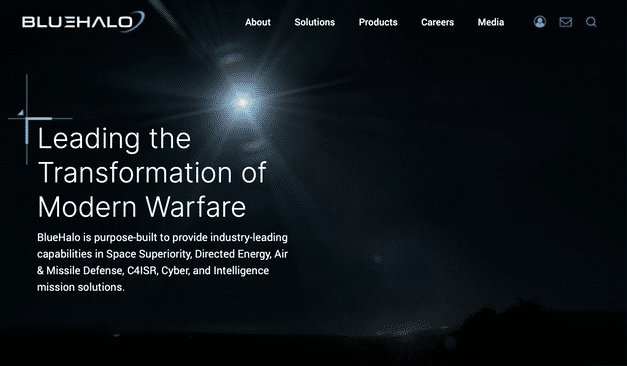


External Communication & Brand Alignment
Customers, partners, and investors need reassurance that the M&A will not disrupt their experience or impact business continuity. Effective external communication can prevent uncertainty and foster trust.
Key External Communication Tactics:
- Early and Transparent Announcements: Clearly communicate the reason for the M&A and its benefits.
- Consistent Branding Across Channels: Ensure websites, social media, and marketing materials reflect the newly aligned brand identity.
- Customer Engagement Initiatives: Conduct webinars, emails, and social media updates to address concerns and highlight benefits.
- Investor Relations: Provide clear updates through press releases, investor calls, and financial reports to maintain confidence in the company’s direction.
Rebranding & Positioning Post-Merger
A successful M&A often involves a brand refresh to reflect the new entity’s identity. Marketing teams must develop a strategic rebranding plan that seamlessly integrates brand elements while preserving brand equity.
Steps to Rebrand Successfully:
- Conduct Brand Audits: Assess how existing brand assets align and determine necessary updates.
- Develop a Unified Brand Story: Craft messaging that reflects the shared vision and values of the new entity.
- Redesign Marketing Materials: Update logos, websites, business cards, and digital assets for consistency.
- Launch a Rebrand Campaign: Announce the brand evolution through press releases, digital campaigns, and customer outreach.



Crisis Communication Planning
Even well-executed M&As can face setbacks. Marketing teams should proactively develop crisis communication plans to address potential reputation risks.
Essential Crisis Communication Components:
- Risk Assessment: Identify potential areas of concern, such as customer dissatisfaction or employee backlash.
- Pre-Approved Messaging: Develop templated responses for different scenarios to ensure quick action.
- Dedicated Crisis Team: Assemble a team responsible for managing communications during potential crises.
- Ongoing Monitoring: Use social listening and media tracking to gauge sentiment and address concerns promptly.
Measuring Success
Assessing the effectiveness of M&A communications is crucial for refining strategies and ensuring alignment with business goals.
Key Metrics to Track:
- Employee Sentiment Surveys: Gauge morale and understanding of the M&A.
- Customer Retention Rates: Monitor changes in customer loyalty and satisfaction.
- Brand Perception Analysis: Track sentiment shifts through media coverage and social listening.
- Engagement on Digital Channels: Analyze email open rates, social media interactions, and website traffic related to M&A announcements.
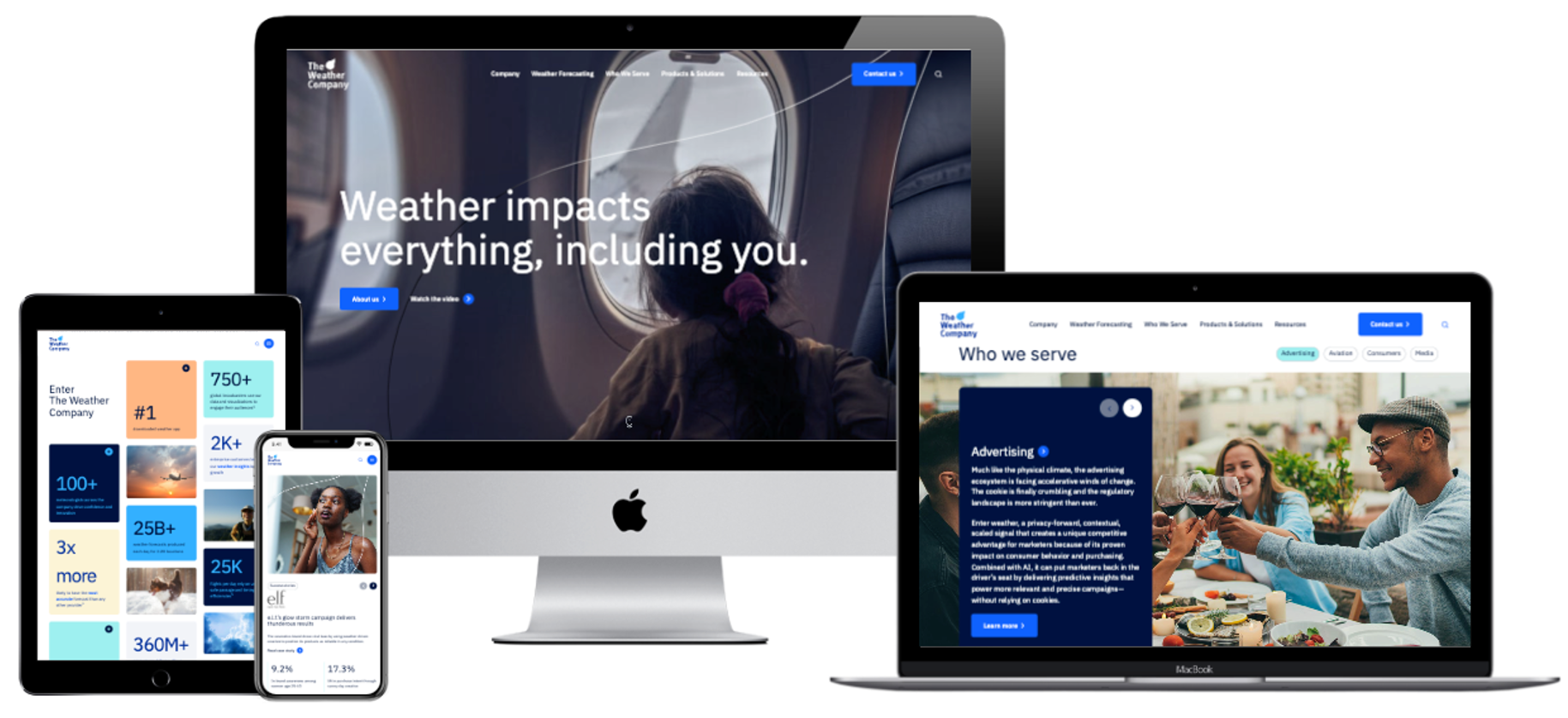

Final Thoughts
Marketing plays a vital role in ensuring that M&A transitions are smooth, transparent, and strategically communicated. By crafting clear messaging, engaging stakeholders, and proactively managing brand perception, companies can turn M&A challenges into opportunities for growth and innovation.
In today’s fast-evolving market, staying relevant means more than just keeping up—it requires transformation. Some of the most successful brands have undergone strategic rebrands to stay ahead of competition, adapt to changing consumer preferences, and realign with their core mission. Here are key lessons from successful brand evolutions and how to apply them to your strategy in 2025.
1. Understand the “Why” Behind Rebranding
A strong rebrand starts with a clear purpose. Whether due to mergers, market shifts, or outdated visuals, brands that successfully rebrand do so with a strategic vision. Take Airbnb’s 2014 brand transformation—its shift from a simple rental service to a community-driven experience was reflected in a fresh logo, new messaging, and an enhanced user experience.
Takeaway: Before launching a rebrand, assess the core reason behind it and ensure every aspect of the new identity aligns with business goals and customer expectations.



2. Maintain Brand Recognition While Innovating
Brands like Burger King and Mastercard have modernized their identities while maintaining recognizability. Burger King’s retro-inspired logo redesign in 2021 paid homage to its heritage while streamlining its aesthetic for digital platforms.
Takeaway: Balance innovation with familiarity. Retaining core elements, such as color schemes or typography, helps consumers transition smoothly to the new identity.
3. Align with Consumer Values
Brands that integrate cultural relevance and consumer values into their rebrands create stronger connections. Patagonia’s commitment to sustainability has been consistently reflected in its messaging and business decisions, reinforcing brand authenticity.
Takeaway: Listen to your audience and ensure your rebrand aligns with their expectations and values.
4. Invest in Digital-First Branding
A brand’s digital presence is just as crucial as its physical one. Companies like Instagram have evolved their logos and UX to better fit mobile-first experiences, emphasizing usability and engagement.
Takeaway: Design with digital platforms in mind, ensuring seamless integration across all channels.
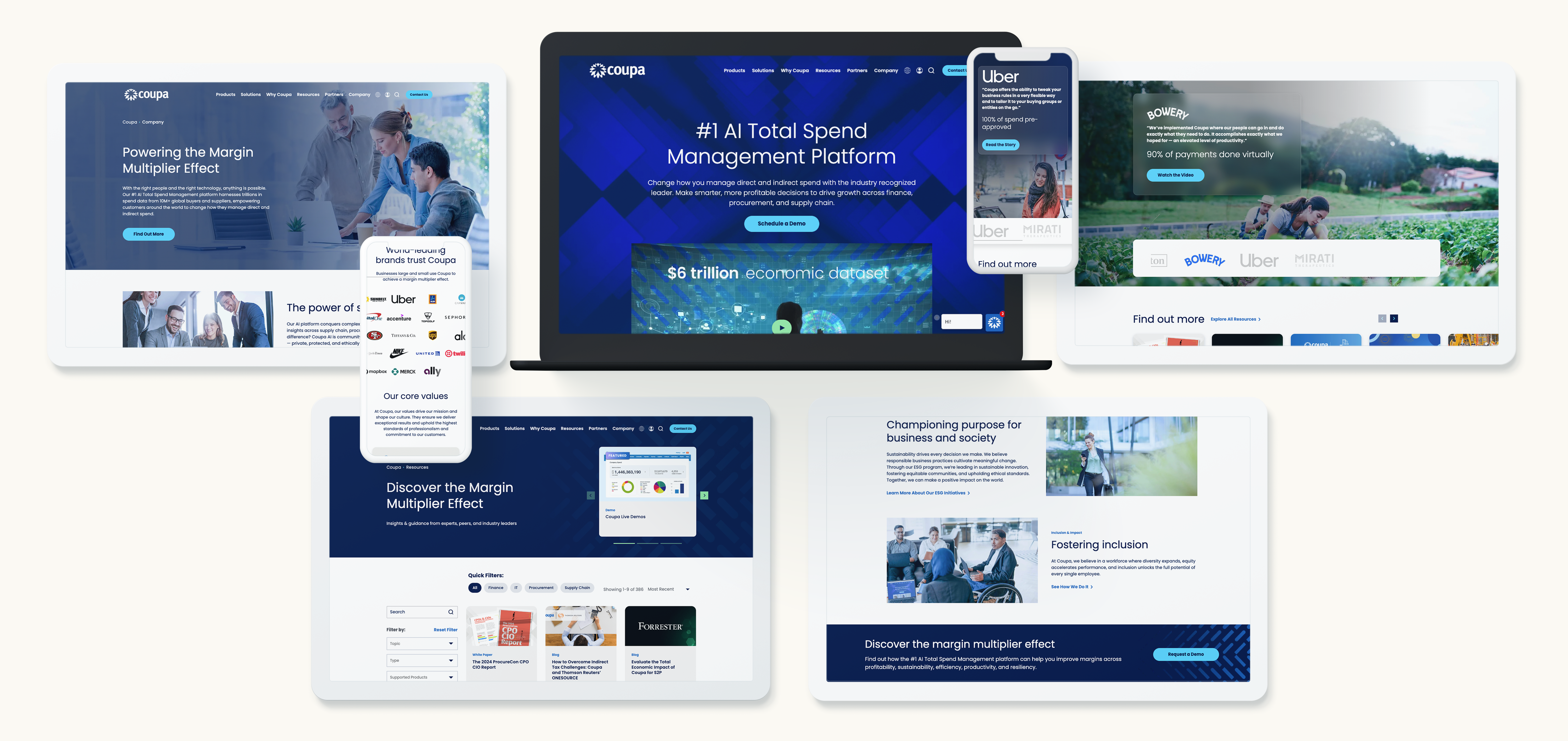

5. Plan for a Seamless Rollout
A poorly executed rebrand can lead to confusion or backlash. Successful rebrands, like Dunkin’s transition from Dunkin’ Donuts, were accompanied by comprehensive marketing campaigns that educated consumers and generated excitement.
Takeaway: Plan a phased rollout, engage key stakeholders, and communicate changes effectively.
Transform Your Brand with Confidence
A strategic rebrand can revitalize your business and strengthen customer loyalty. If you’re considering a rebrand in 2025, contact Bluetext to craft a transformation strategy that drives results.
As digital platforms evolve, so do the ways brands connect with audiences. Visual storytelling is no longer a luxury but a necessity in a saturated market. Research shows that visuals are processed 60,000 times faster than text, making them a powerful tool for capturing attention and conveying complex narratives.
This blog delves into how visual storytelling can elevate your marketing campaigns in 2025, with actionable tips and trends to stay ahead.
The Power of Visuals in Modern Marketing
Visuals evoke emotions and make information more memorable. A strong visual narrative can:
- Enhance brand recall
- Drive engagement on social media
- Simplify complex ideas
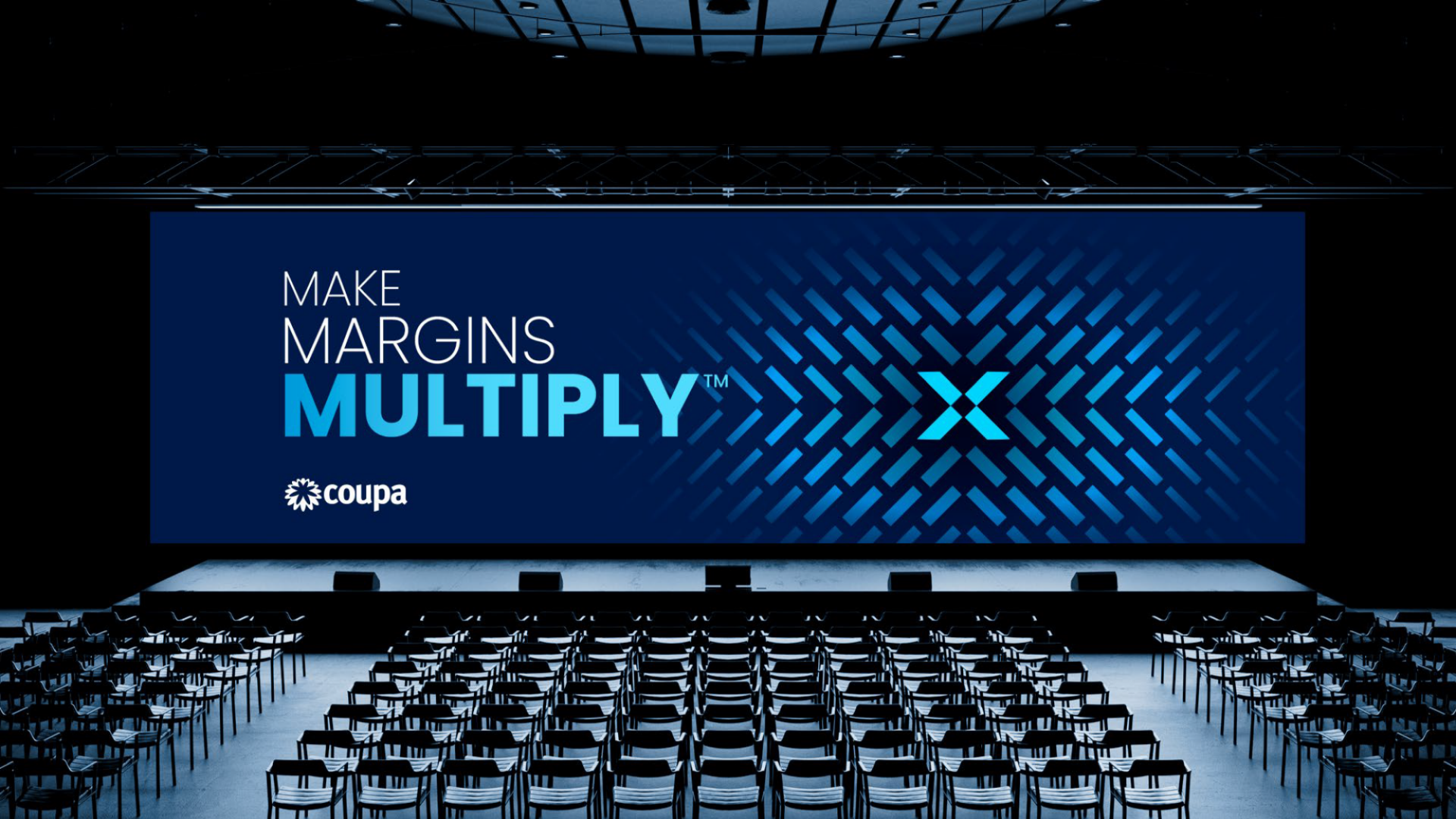


Key Trends in Visual Storytelling for 2025
- Immersive Experiences
- AR and VR technologies are transforming storytelling. Brands can create virtual try-ons, 360-degree videos, and immersive brand experiences.
- User-Generated Content (UGC)
- Encourage your audience to share photos and videos that align with your brand story.
- Interactive Infographics
- Make data engaging by incorporating clickable elements, animations, and interactive charts.
- Micro-Moments
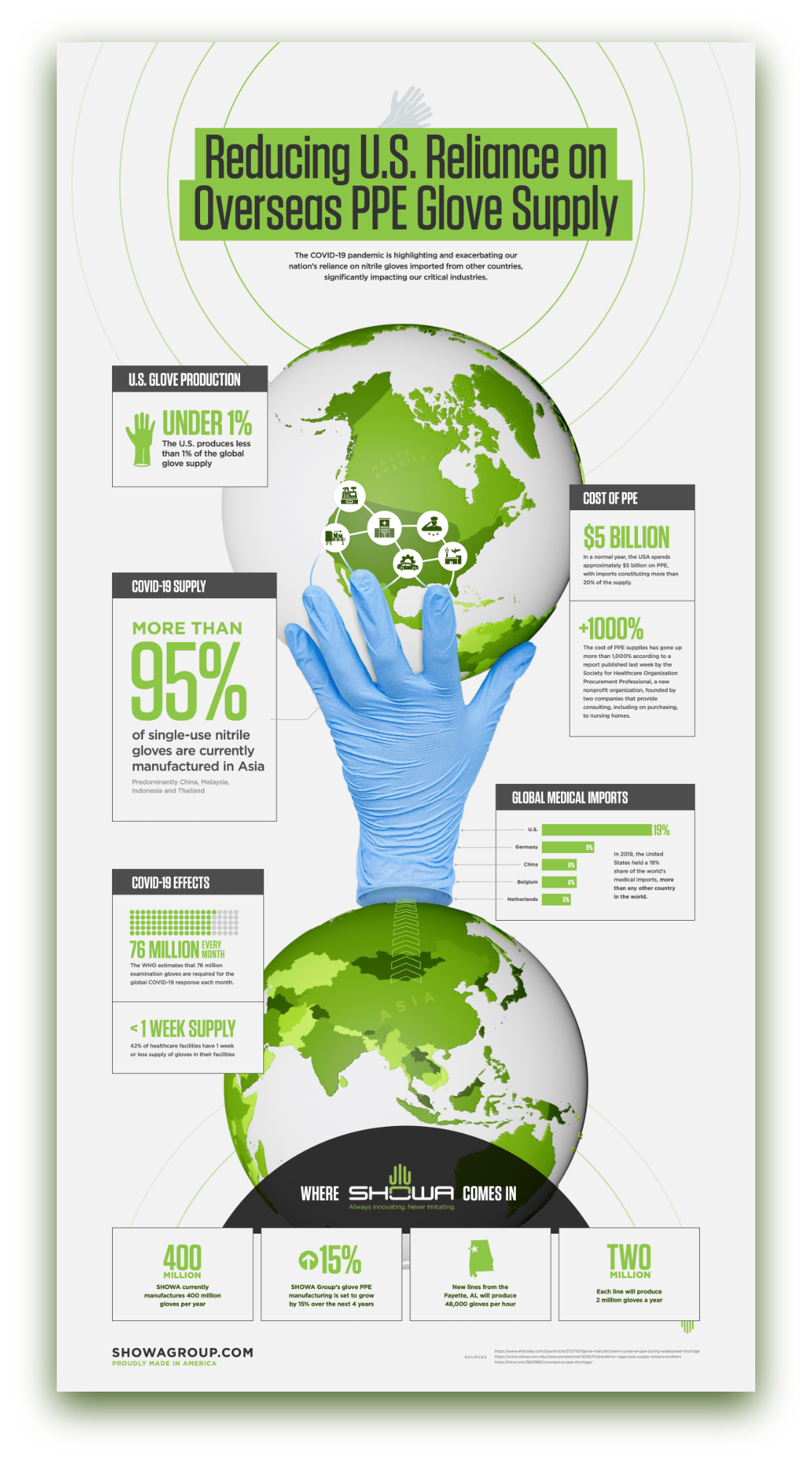

Building a Visual Storytelling Framework
- Define Your Narrative
- What story are you telling, and why does it matter to your audience?
- Invest in High-Quality Visuals
- Professional design and photography can elevate your content.
- Optimize for Each Platform
- Tailor your visuals for different platforms to maximize impact.
- Measure Performance
- Use metrics like click-through rates, shares, and time spent on content to evaluate effectiveness.
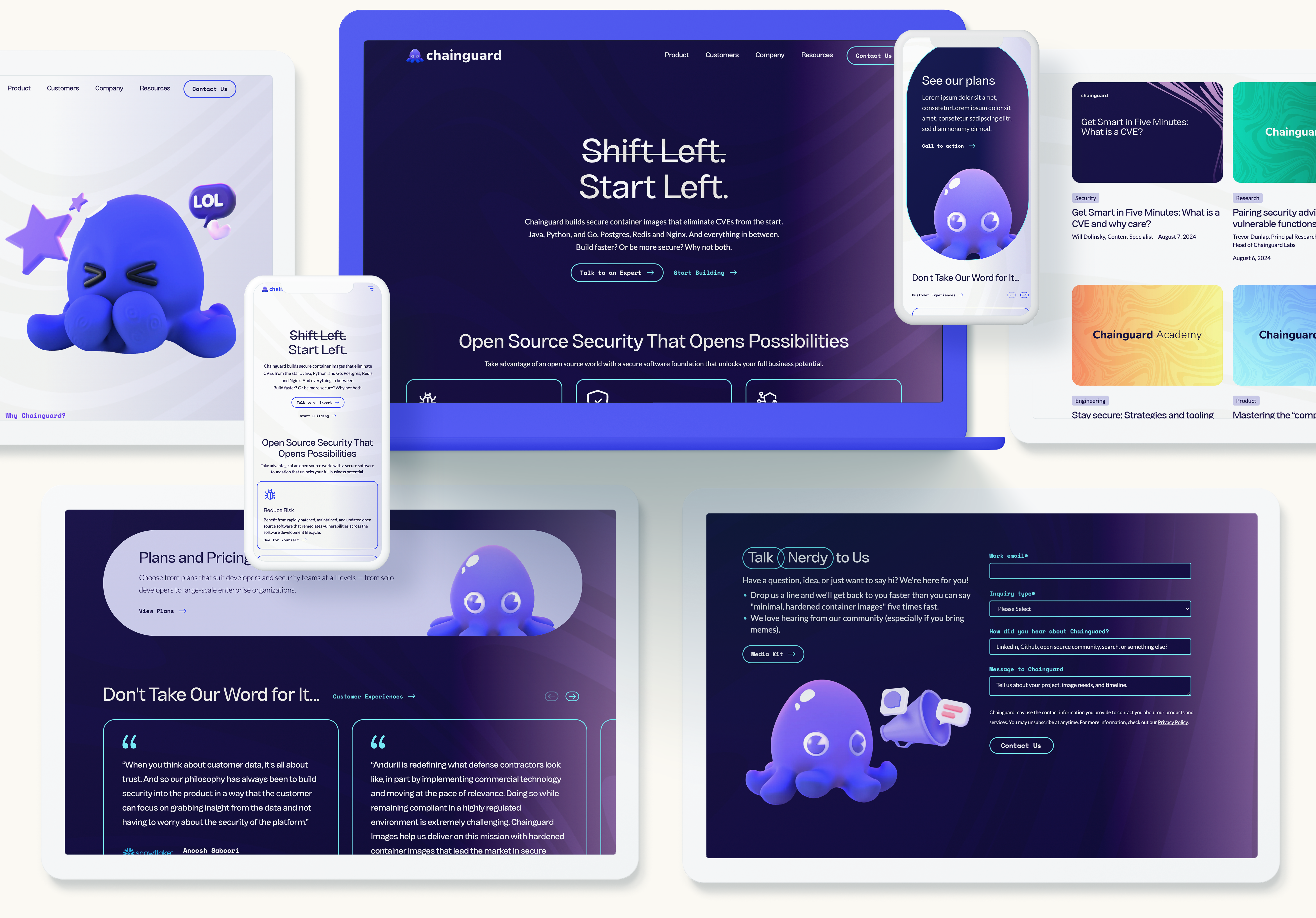

Crafting Stories That Resonate
Visual storytelling is an ever-evolving art that requires creativity and strategy. By embracing new technologies and focusing on authenticity, brands can create narratives that captivate and convert. Need help mastering visual storytelling? Contact Bluetext for expert guidance on crafting compelling brand narratives.
Sustainability has become more than a buzzword—it’s now a defining characteristic of successful marketing campaigns. As consumers grow increasingly aware of environmental and social issues, they expect brands to take meaningful action. According to a Nielsen report, 73% of global consumers say they would definitely or probably change their consumption habits to reduce environmental impact. For marketers, this represents a significant opportunity to align brand values with consumer expectations.
In this blog, we’ll explore how sustainability is shaping modern marketing, strategies to integrate sustainability into campaigns, and how brands can effectively communicate their efforts to socially conscious audiences.
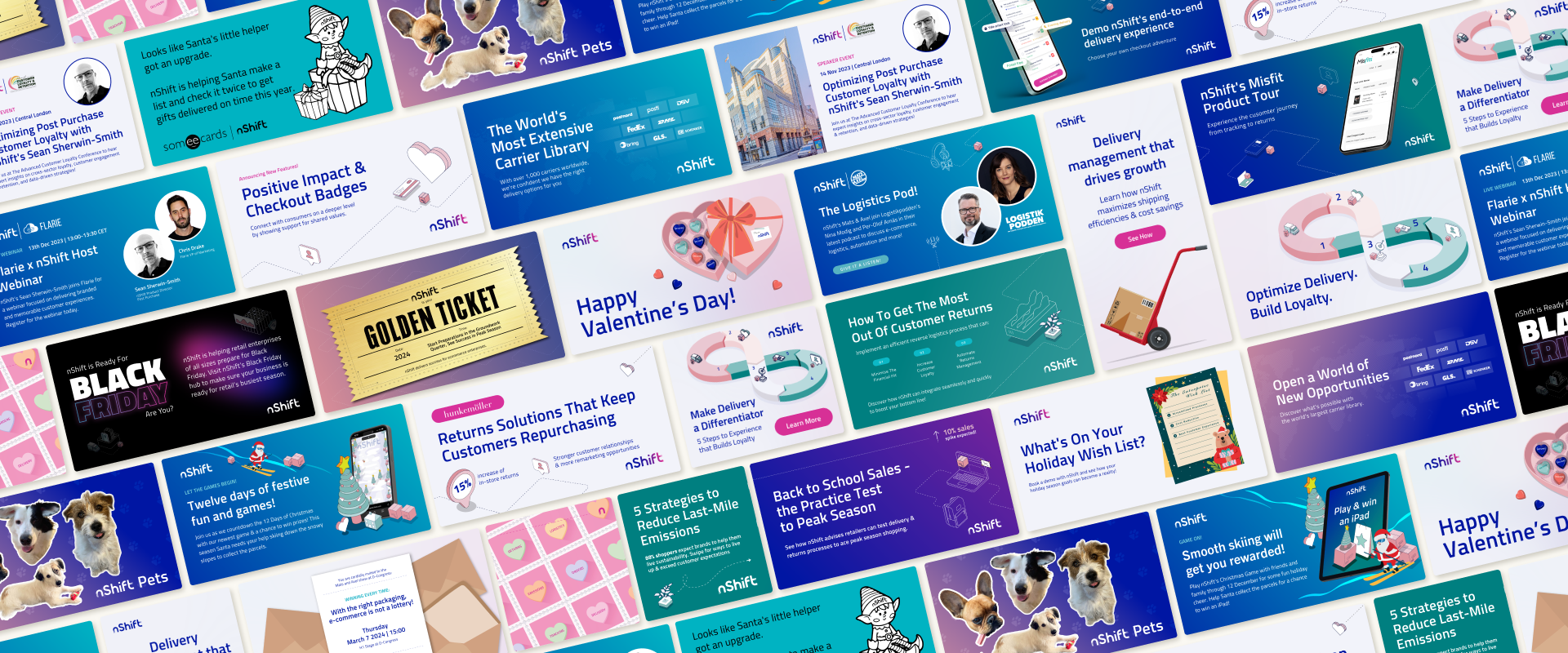

The Rise of Conscious Consumerism
Conscious consumerism is driving a shift in purchasing behavior. People want to support brands that align with their values, including environmental protection, ethical sourcing, and social responsibility. This trend is particularly strong among Millennials and Gen Z, who are more likely to research a brand’s sustainability practices before making a purchase.
Integrating Sustainability into Your Marketing Campaigns
- Authenticity Is Key
- Consumers can spot greenwashing from a mile away. Ensure your sustainability claims are backed by data and credible certifications.
- Highlight Sustainable Practices
- Showcase your efforts, whether it’s reducing carbon emissions, using recycled materials, or partnering with eco-friendly suppliers.
- Leverage Storytelling
- Share compelling stories about your sustainability journey. For example, Patagonia’s “Don’t Buy This Jacket” campaign highlighted the environmental cost of consumerism while promoting responsible consumption.
- Incorporate Green Design
- Use eco-friendly materials for packaging, digital-first campaigns to reduce waste, and sustainable event planning.


Communicating Your Sustainability Efforts
Transparency is essential. Share progress reports, engage with audiences on social media, and feature customer testimonials about your sustainable products.
Measuring the Impact
Track metrics like carbon footprint reduction, customer engagement, and sales growth. Tools like life cycle assessments (LCA) and carbon calculators can provide measurable insights.
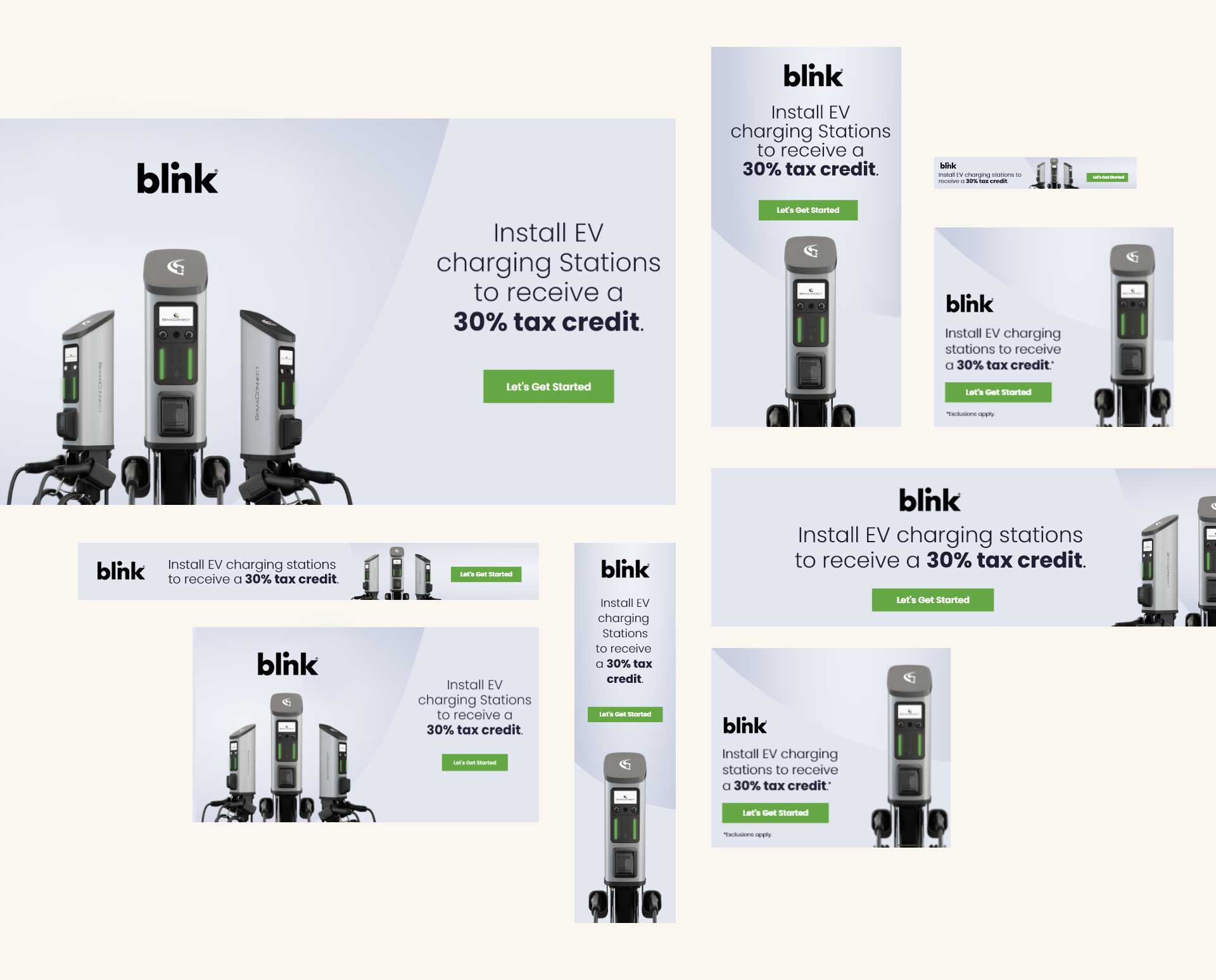

Taking the Next Step
Sustainability is not just a trend but a business imperative. By integrating sustainable practices into your marketing strategy, you can build trust, foster loyalty, and contribute to a better world. Ready to make your marketing campaigns more sustainable? Contact Bluetext to learn how we can help align your brand with purpose.
In an ever-evolving market, a static brand identity risks obsolescence. As industries innovate and consumer preferences shift, brands must adapt to stay relevant. Future-proofing your brand identity ensures you can evolve with the times without losing your core essence. But what does it mean to create a truly adaptable identity, and how can businesses position themselves for long-term success?
The Core Elements of a Timeless Brand
- Clear Purpose and Values: Your brand’s mission and values should anchor all decisions. A strong foundation ensures consistency amid change. These values act as a compass, guiding marketing strategies and fostering trust with audiences.
- Memorable Visual Identity: Logos, typography, and color schemes should be designed for adaptability while maintaining recognizability. A logo refresh or subtle updates can keep your visual identity modern without losing its essence.
- Consistent Voice: A defined tone and messaging style create familiarity, even as trends evolve. Whether it’s witty, professional, or empathetic, consistency in voice reinforces your brand’s personality.


Steps to Future-Proof Your Brand
- Embrace Flexibility: Build a brand style guide that allows room for creative interpretation. Include guidelines for updating visual elements, experimenting with new formats, and evolving content strategies.
- Stay Informed: Monitor industry trends and consumer behaviors to anticipate shifts. For example, as sustainability becomes a priority, integrating eco-conscious messaging into your branding can keep you aligned with audience values.
- Invest in Technology: Utilize tools like CRM systems or analytics platforms to track engagement and adjust strategies in real-time. Emerging technologies, like AI-driven content personalization, can also keep your brand ahead of the curve.



Evolving with Your Audience
A future-proof brand grows alongside its audience. Prioritize feedback and adapt offerings to meet changing needs. Engaging in two-way communication—through surveys, social media, or customer service—can provide valuable insights. Additionally, fostering a community around your brand creates loyalty that extends beyond specific products or services.
Branding for Longevity
Future-proofing your brand identity is an investment in your company’s resilience. By staying flexible and audience-focused, your brand can remain relevant and impactful for years to come. The ability to adapt, paired with a strong foundational identity, ensures your brand can weather industry disruptions while continuing to thrive. Reach out to Bluetext to learn how we can help you build a brand identity that stands the test of time.